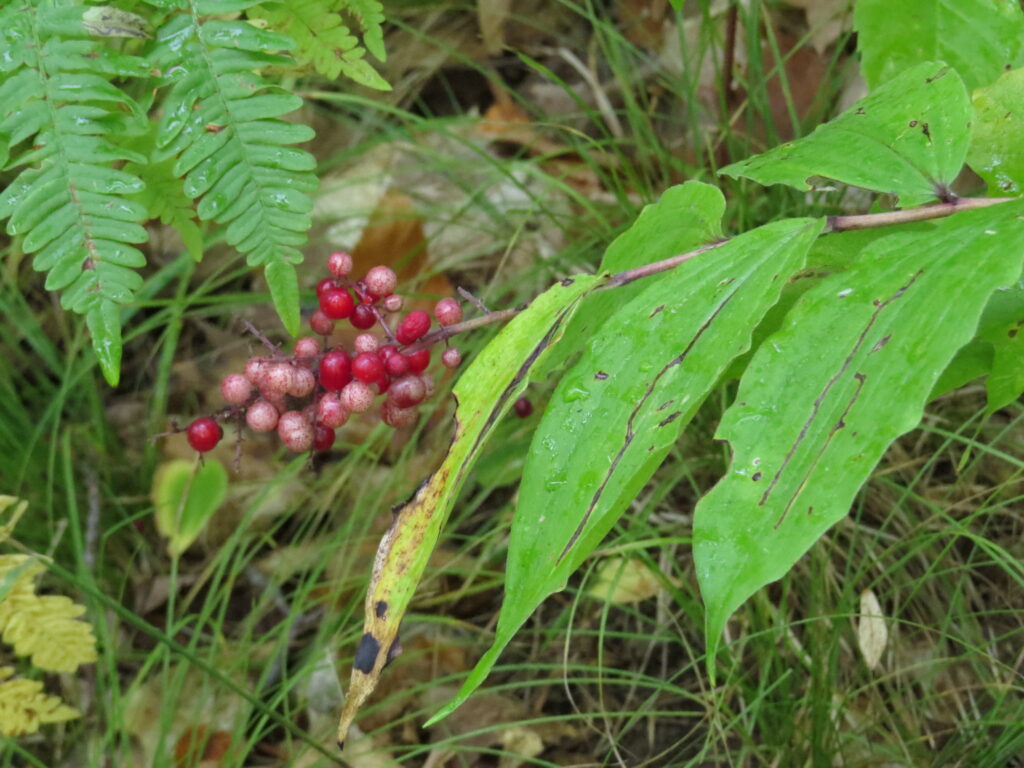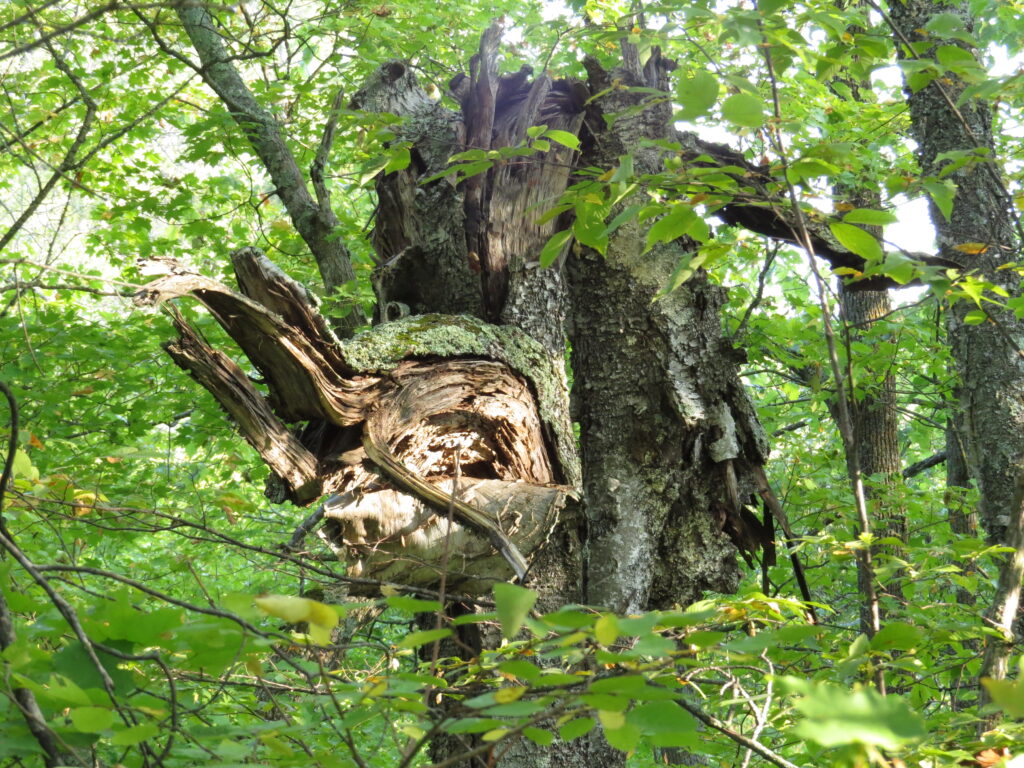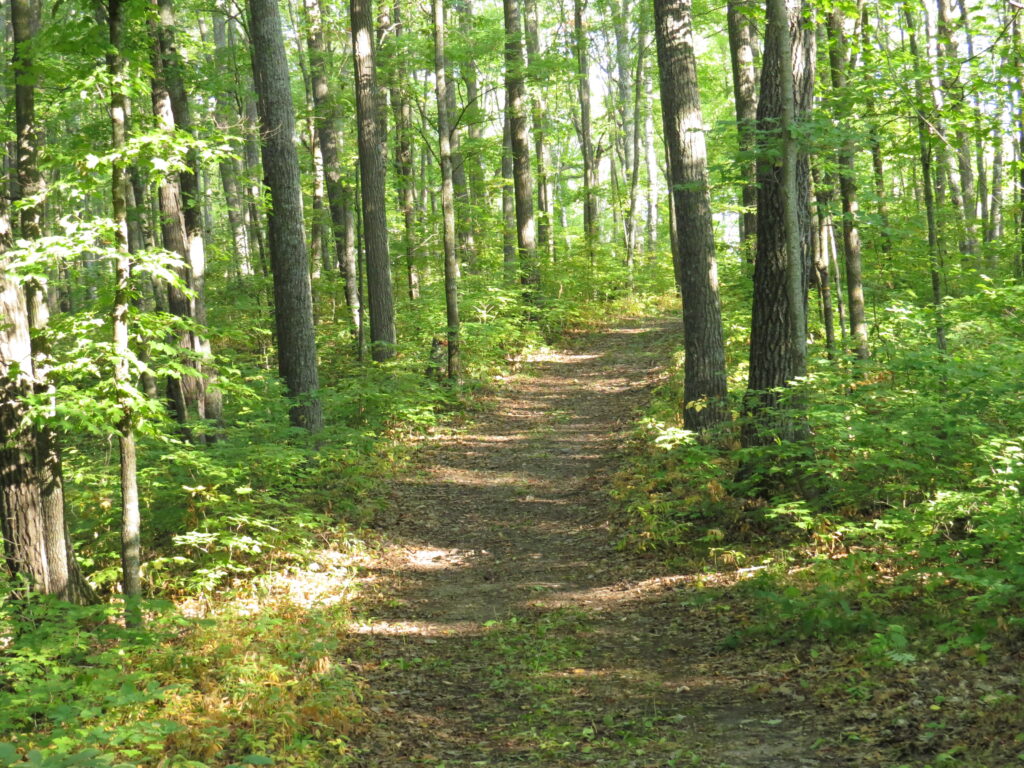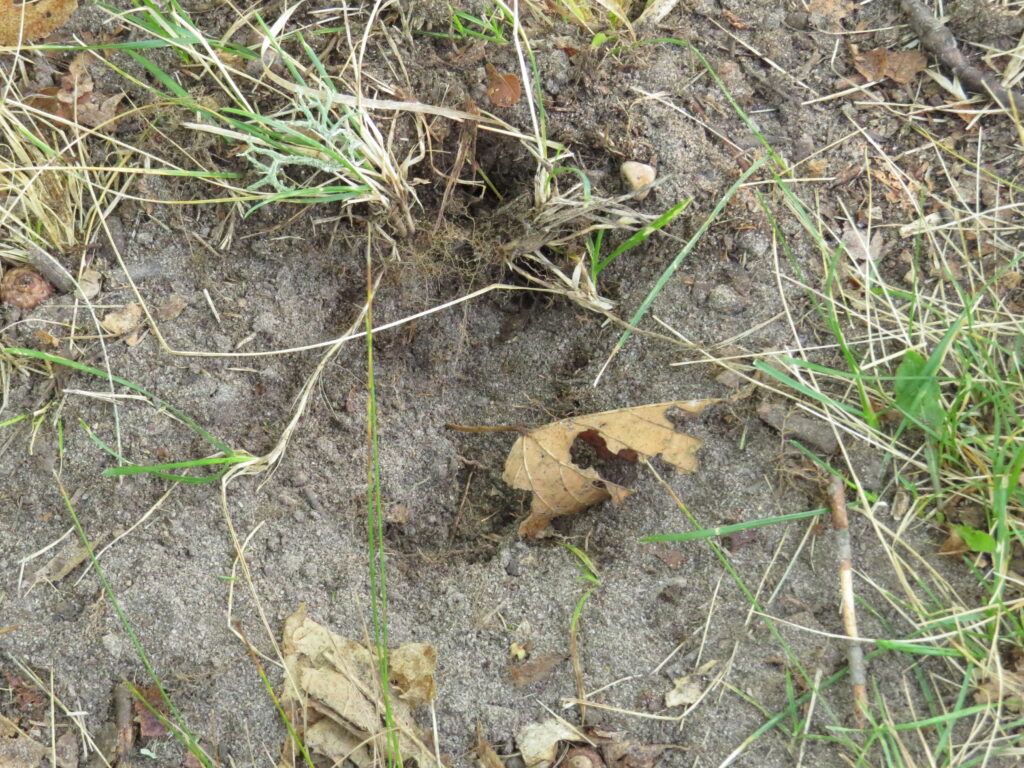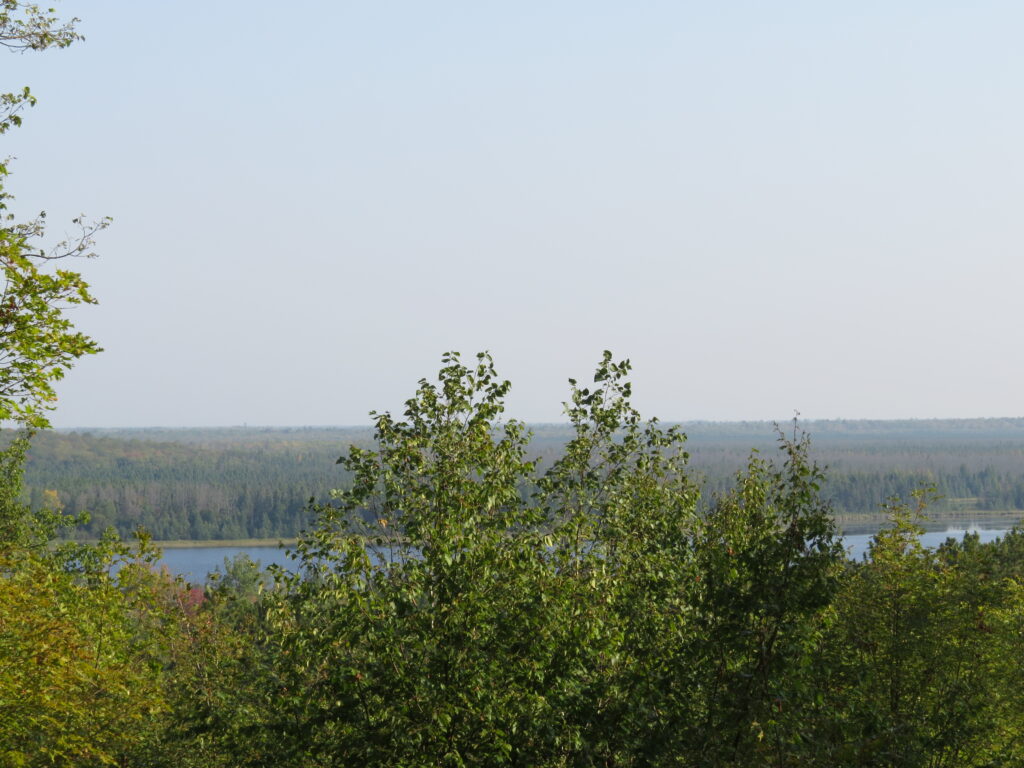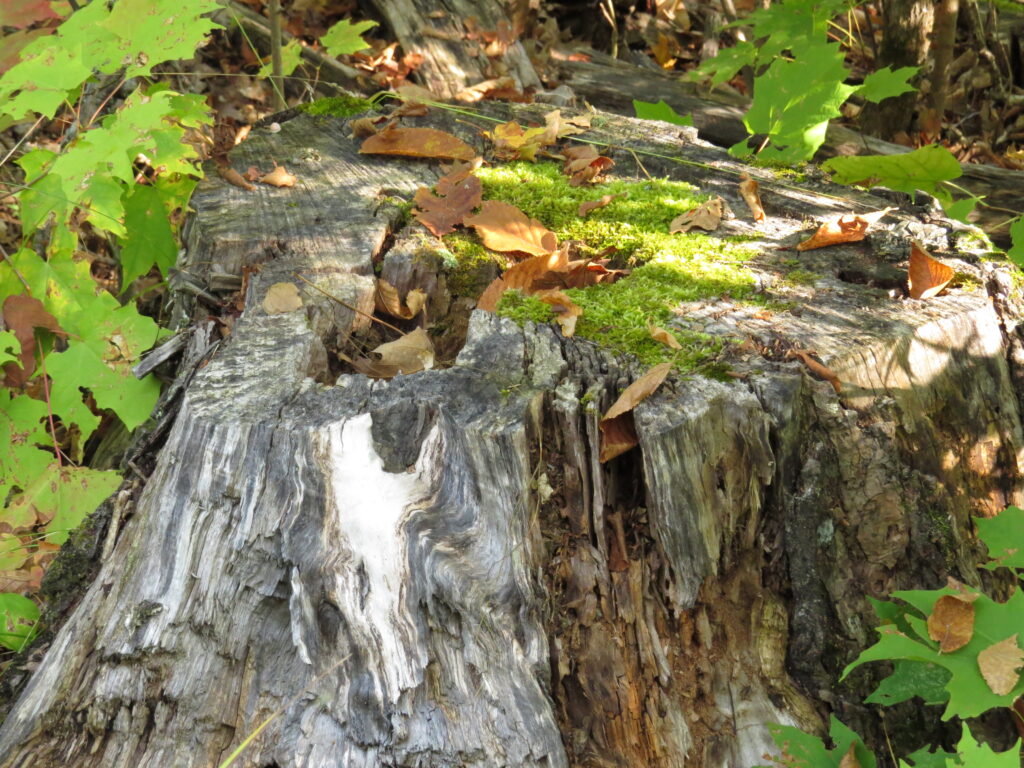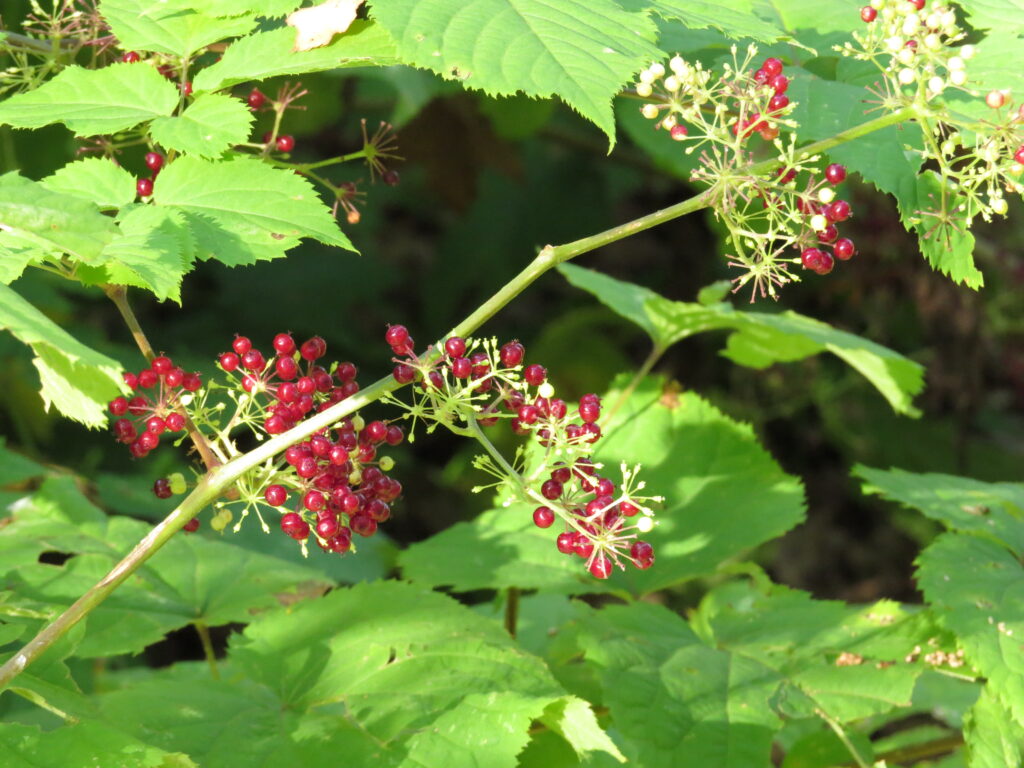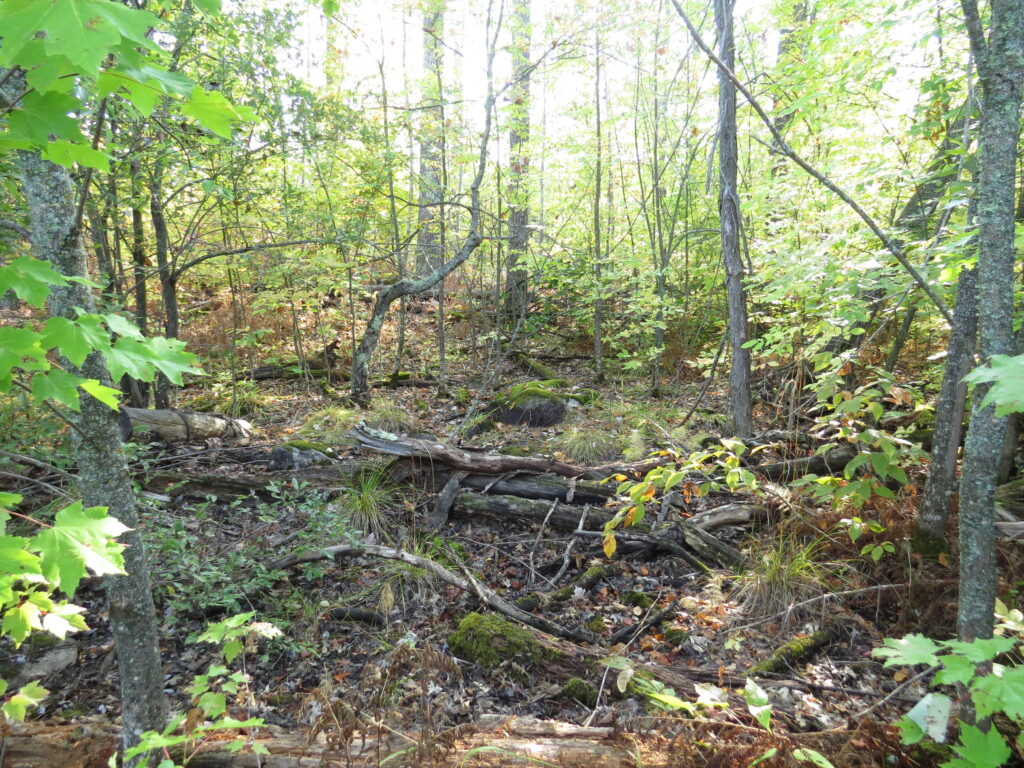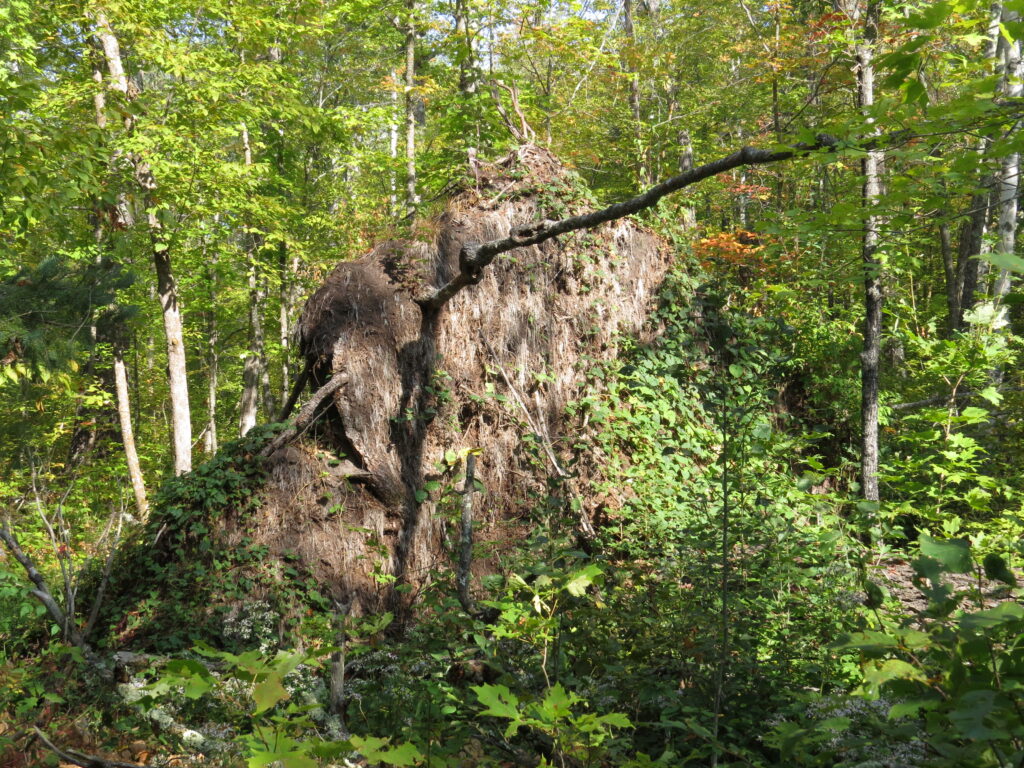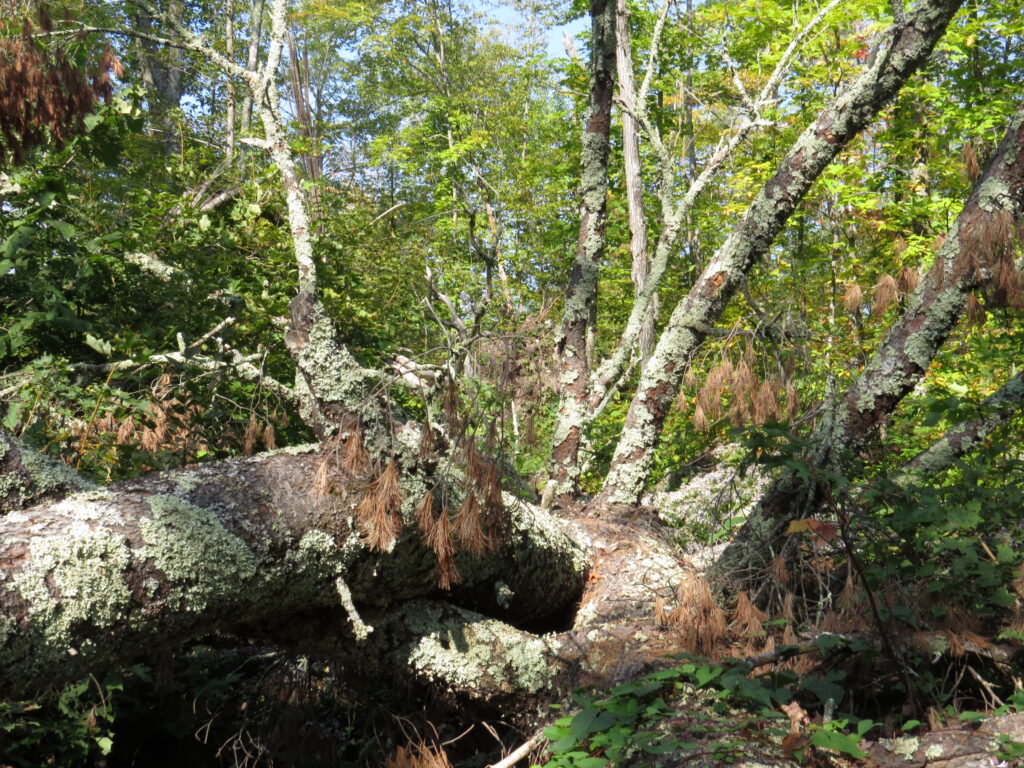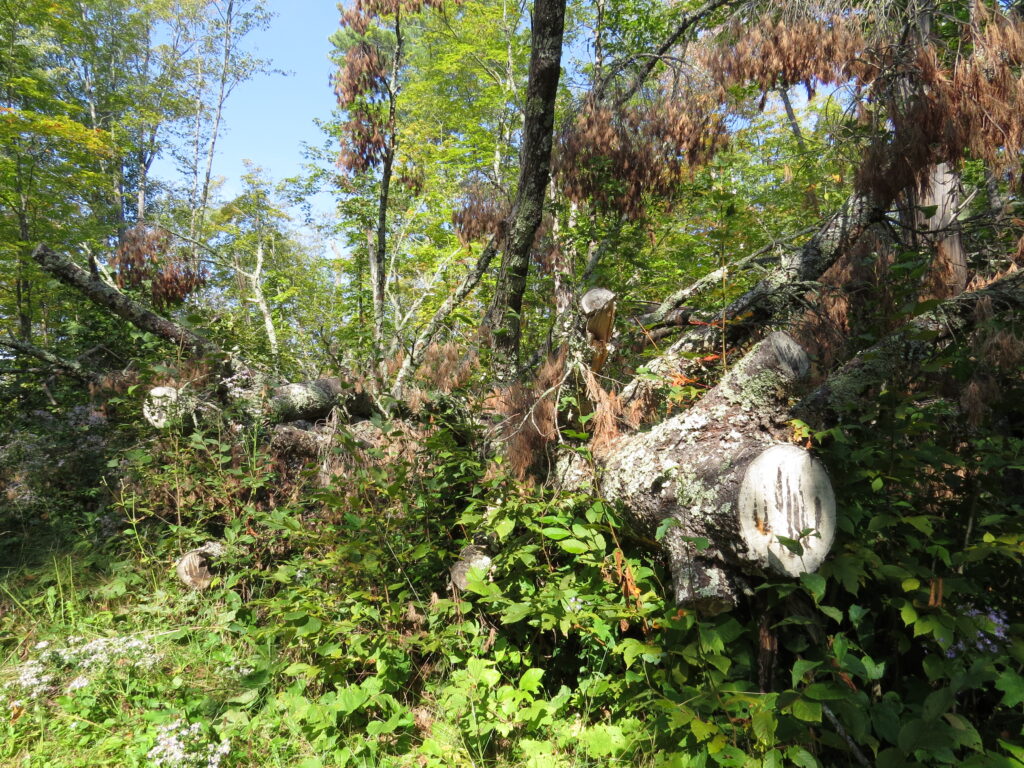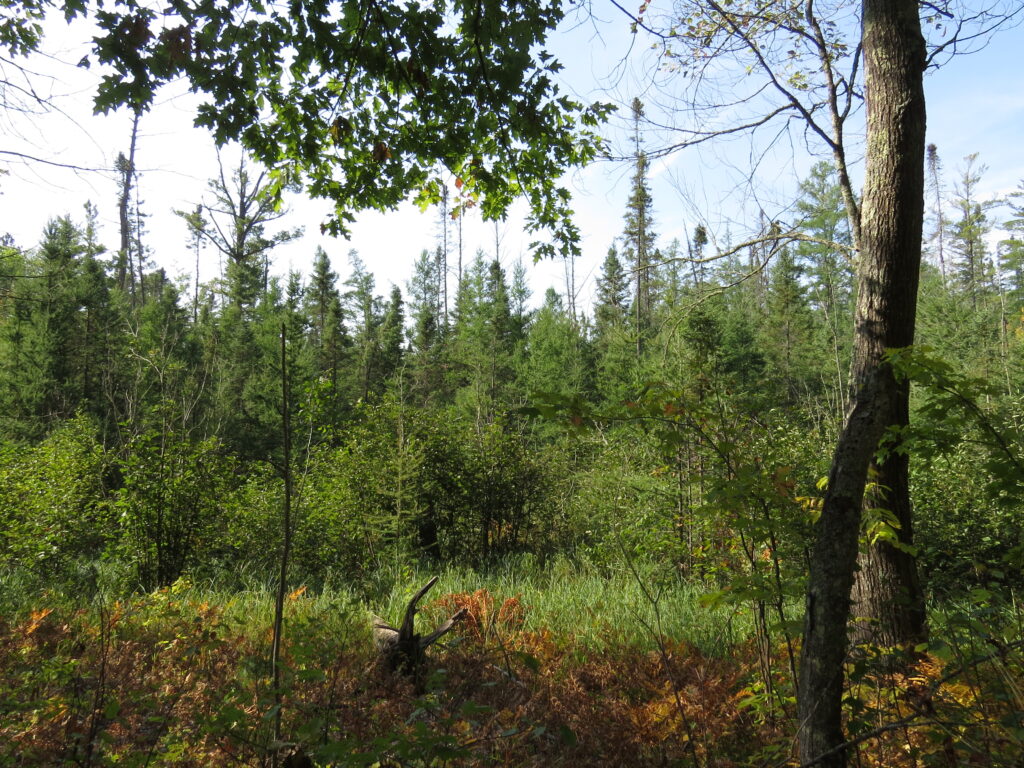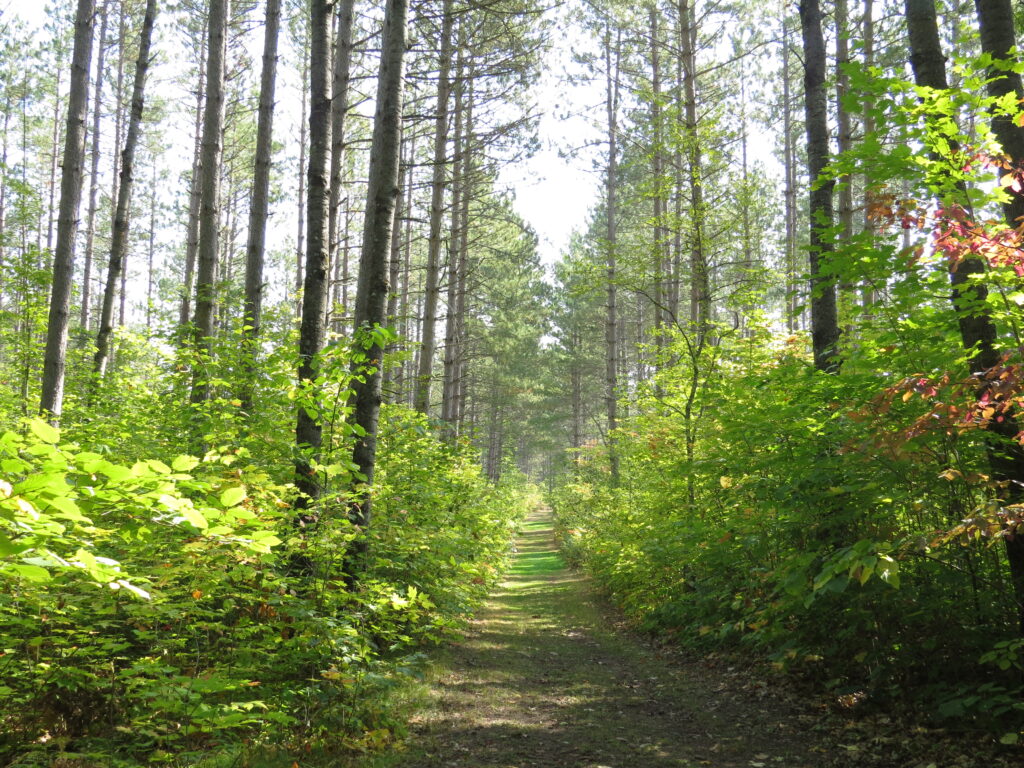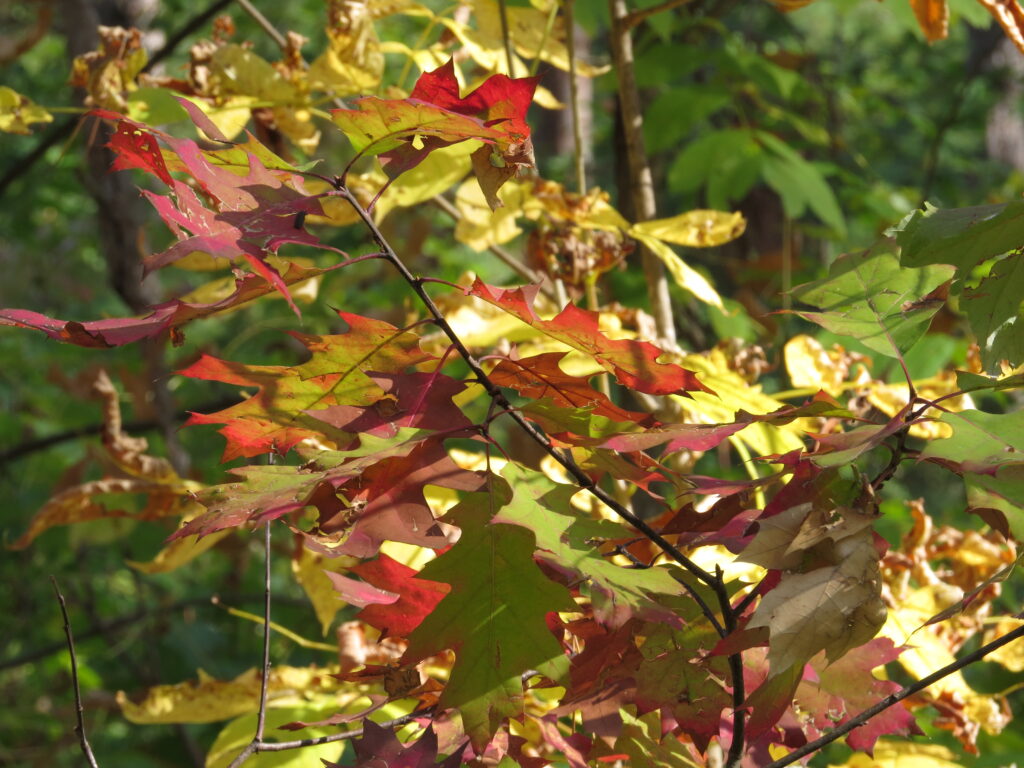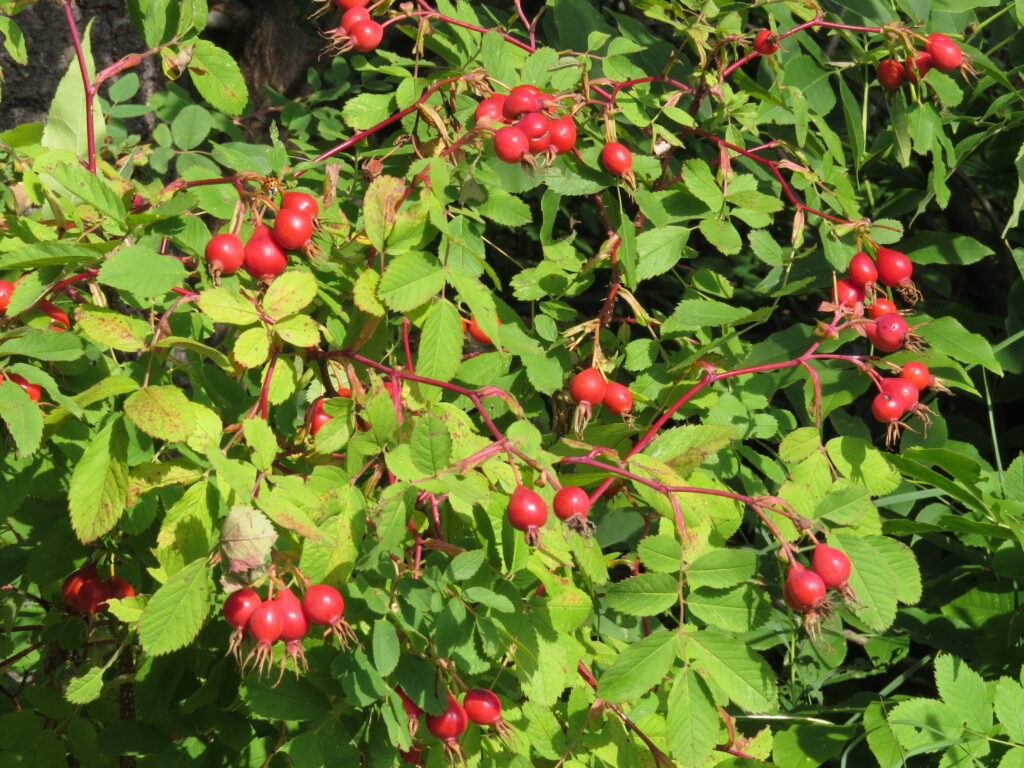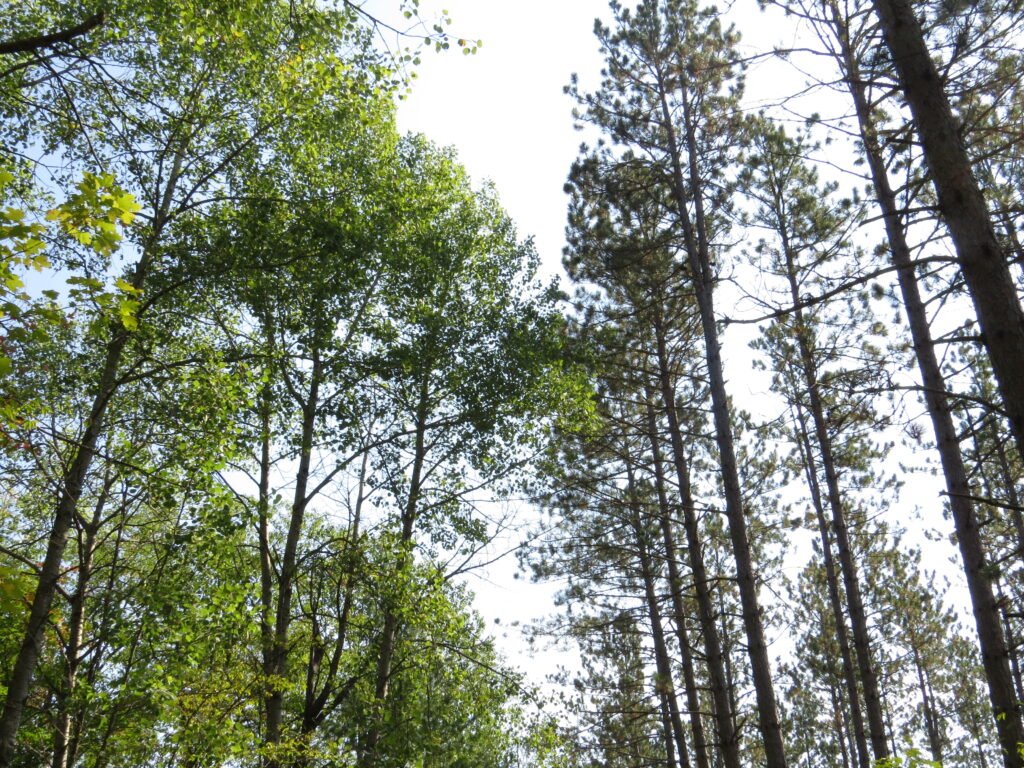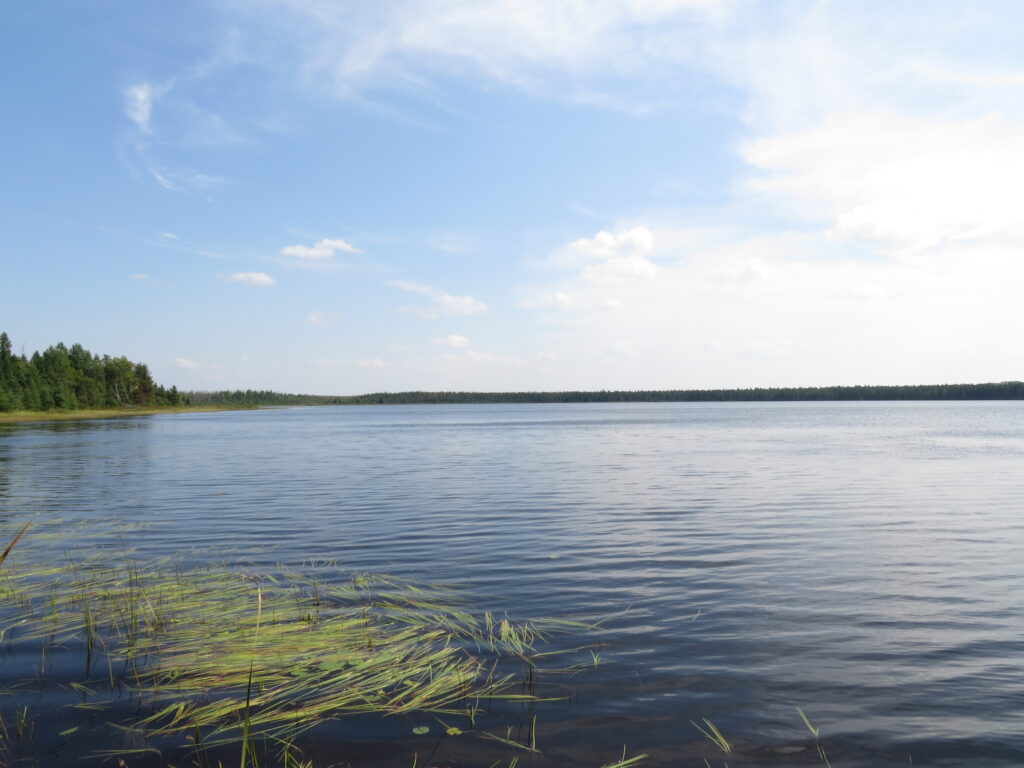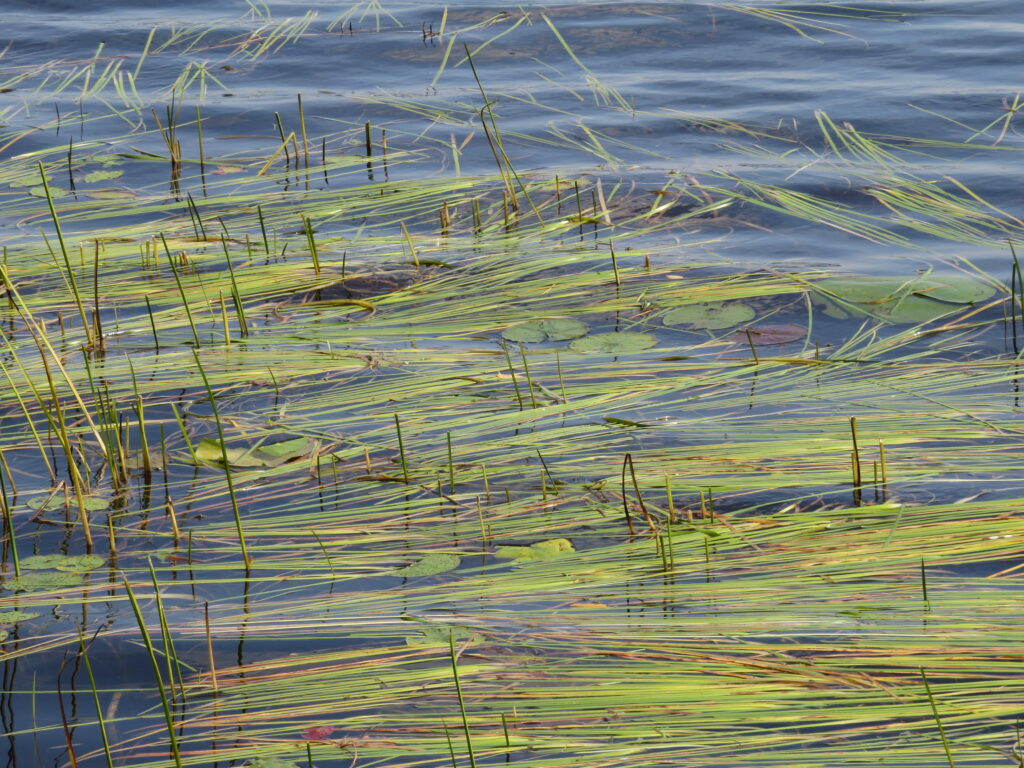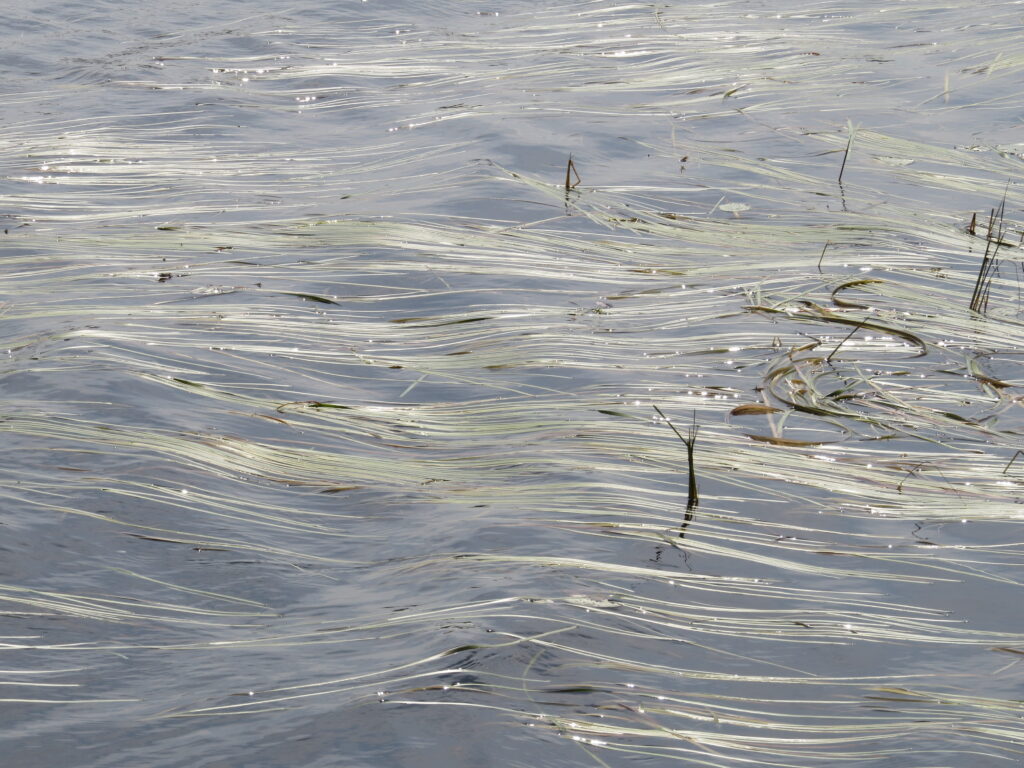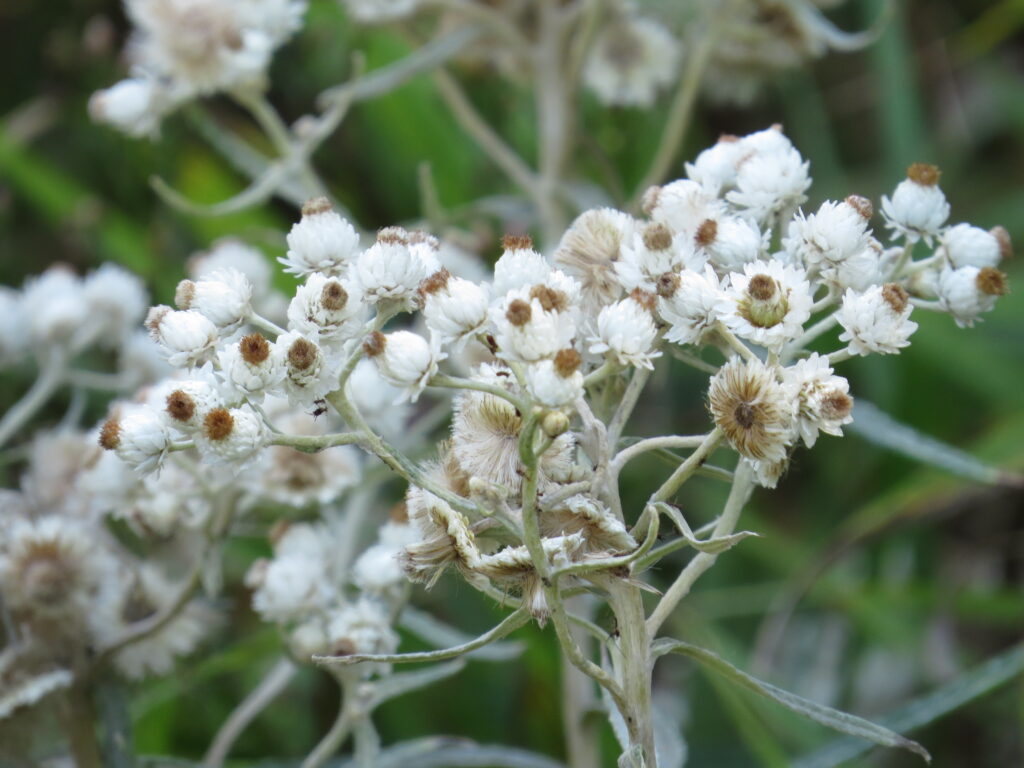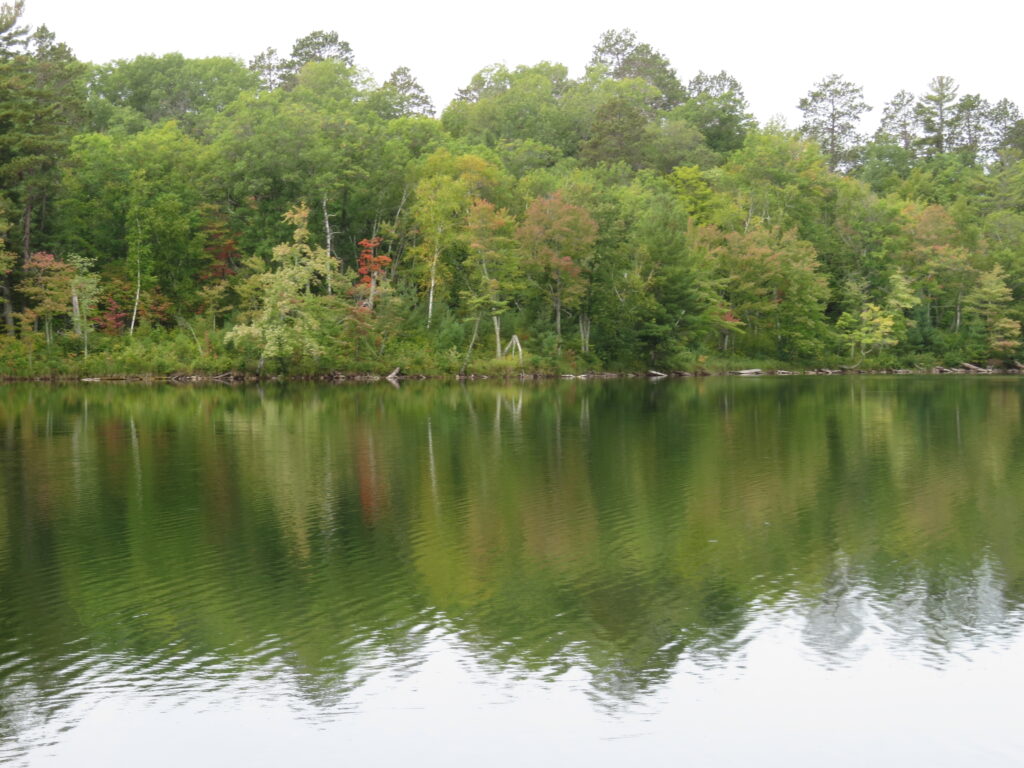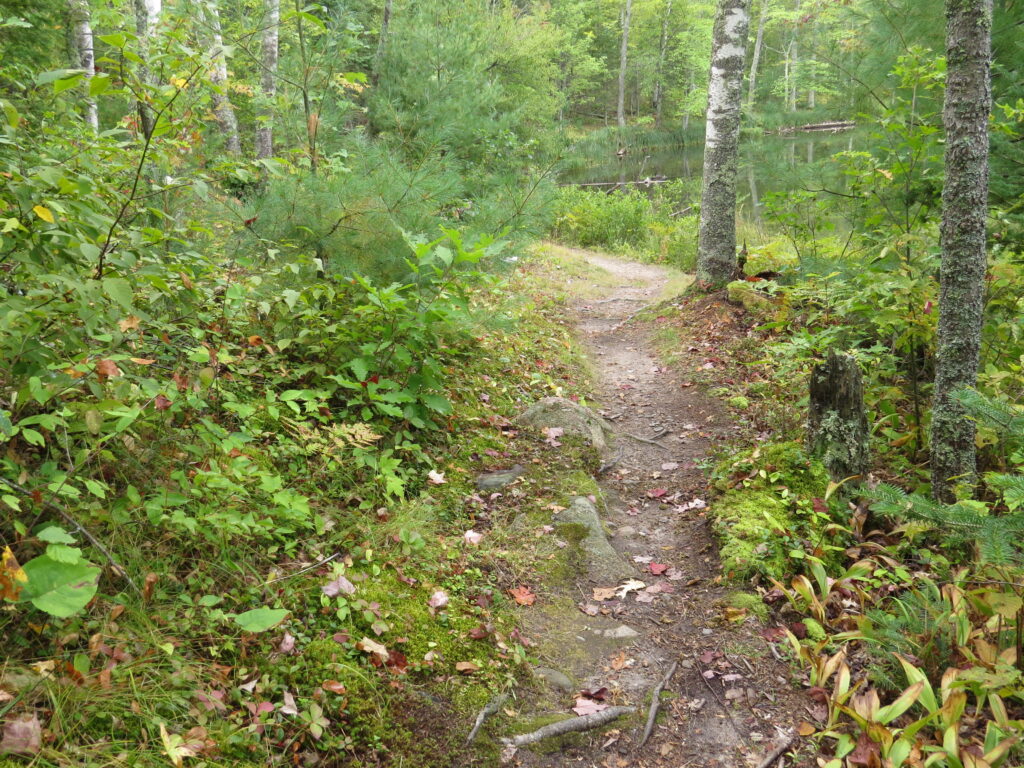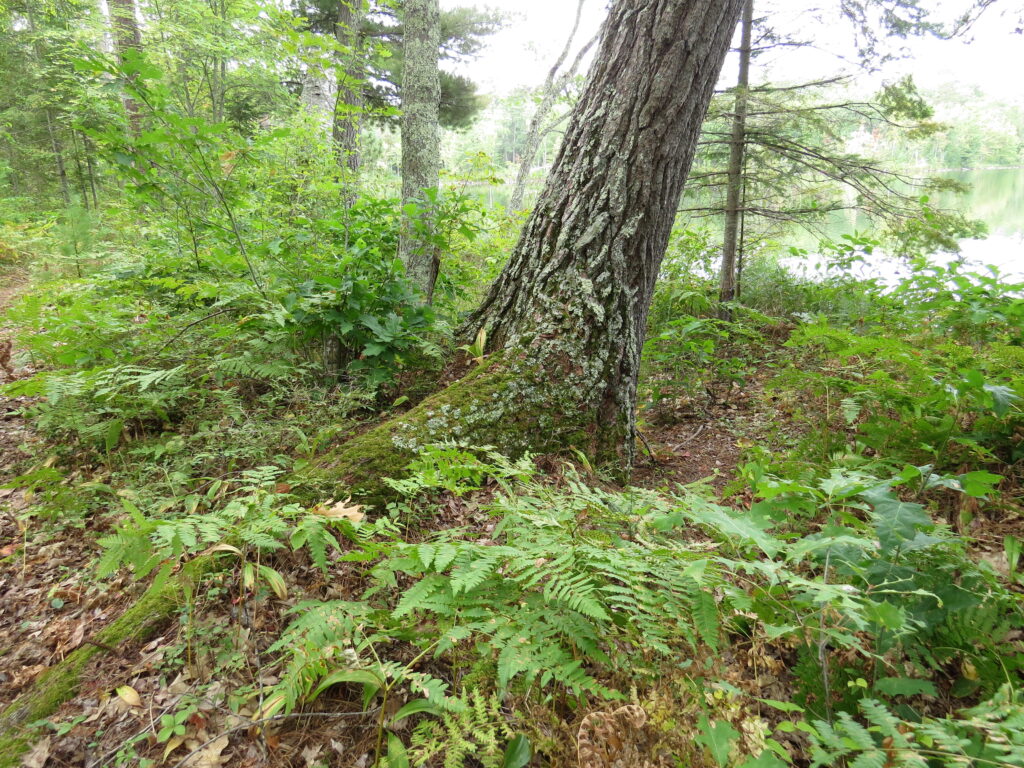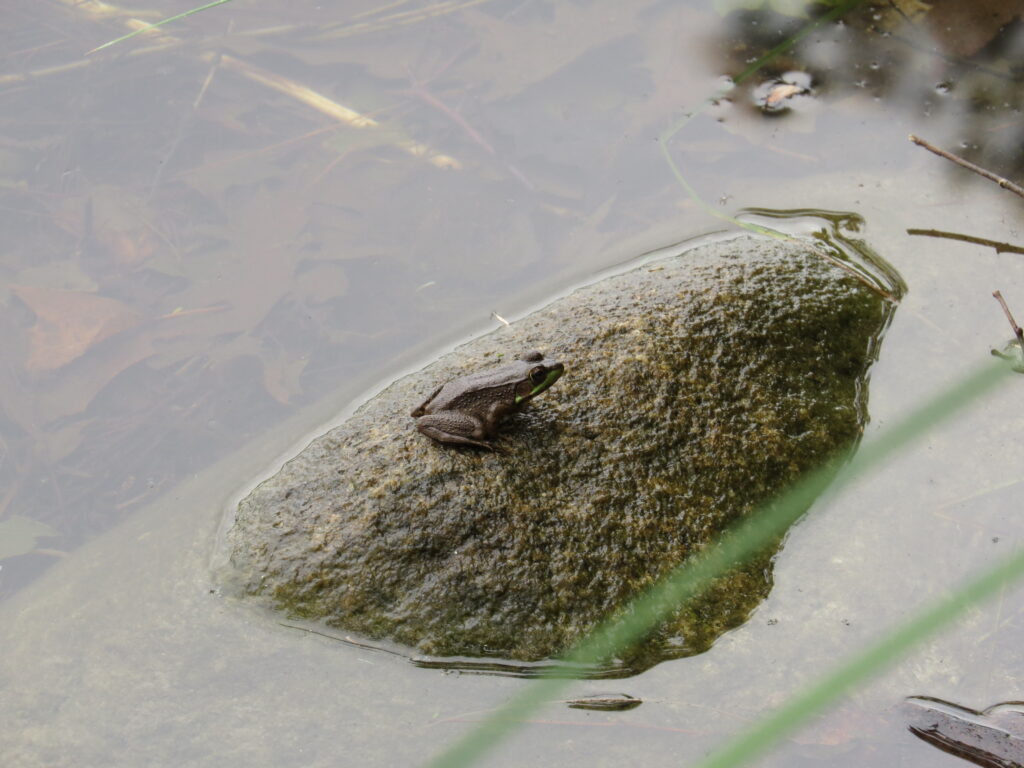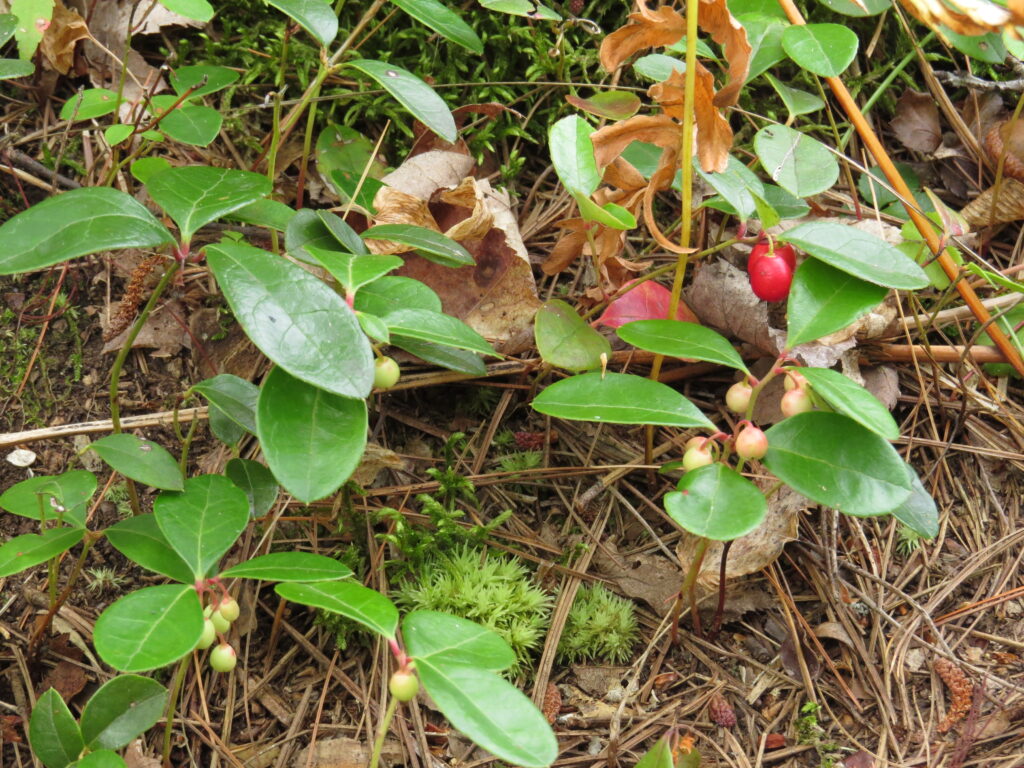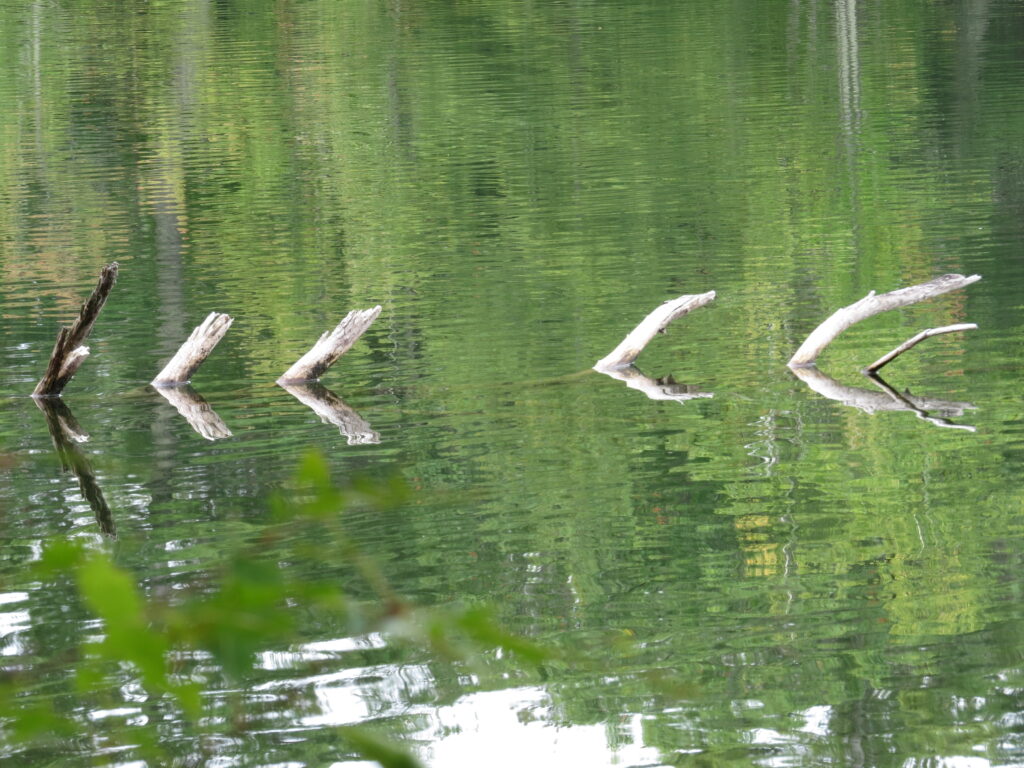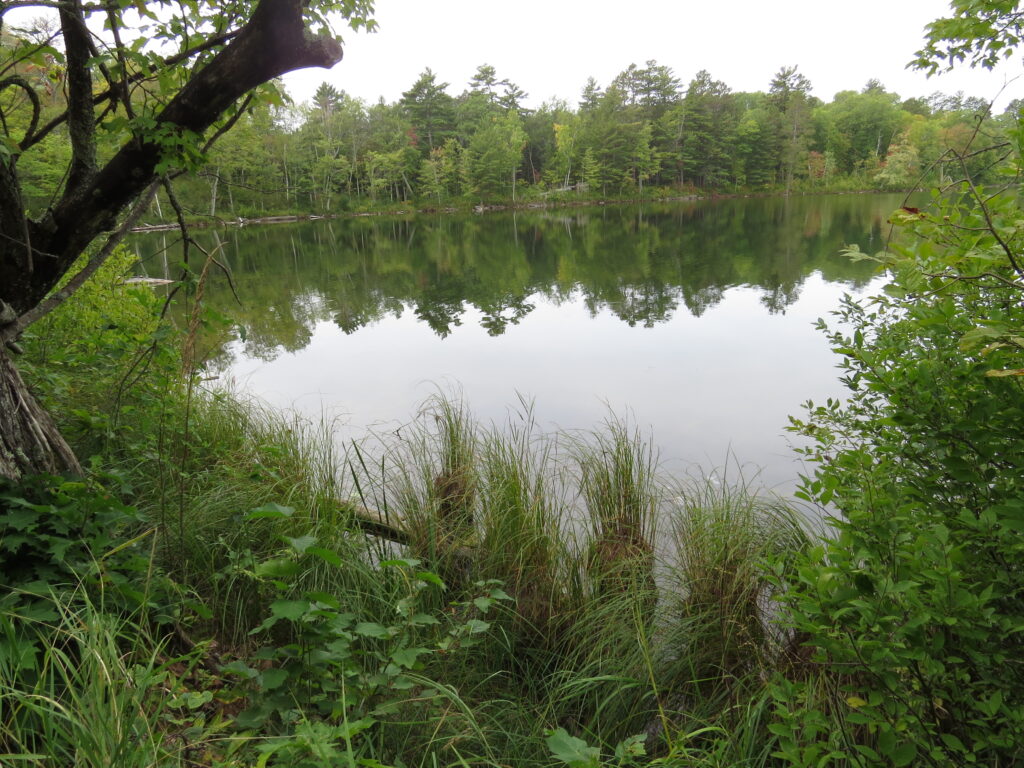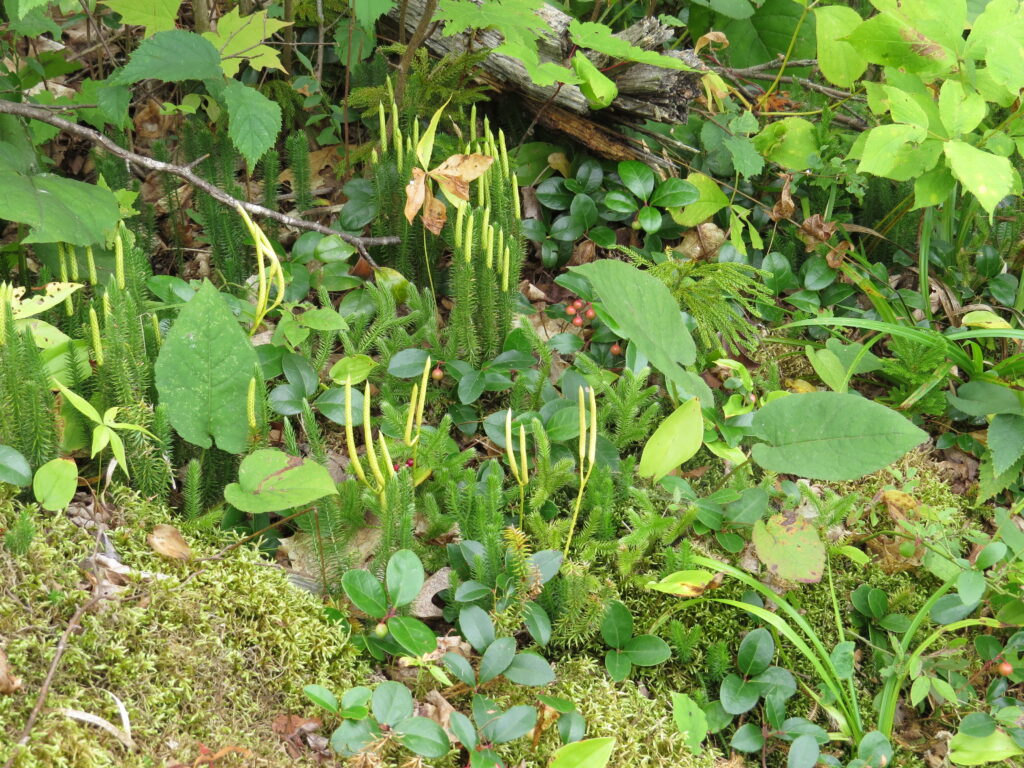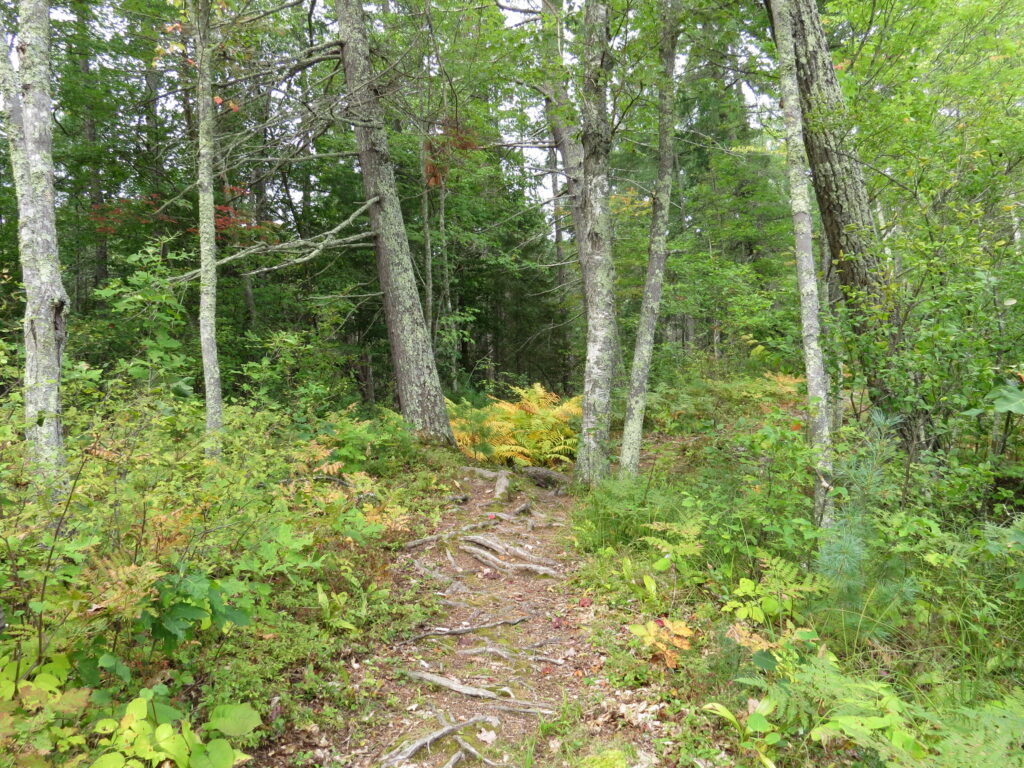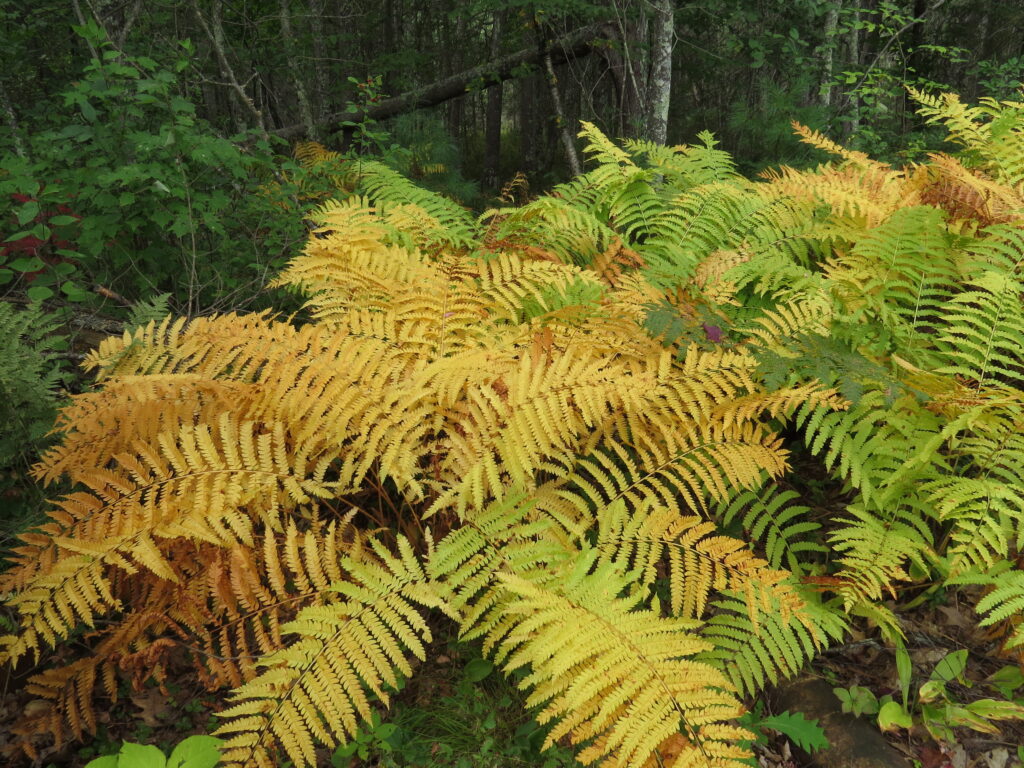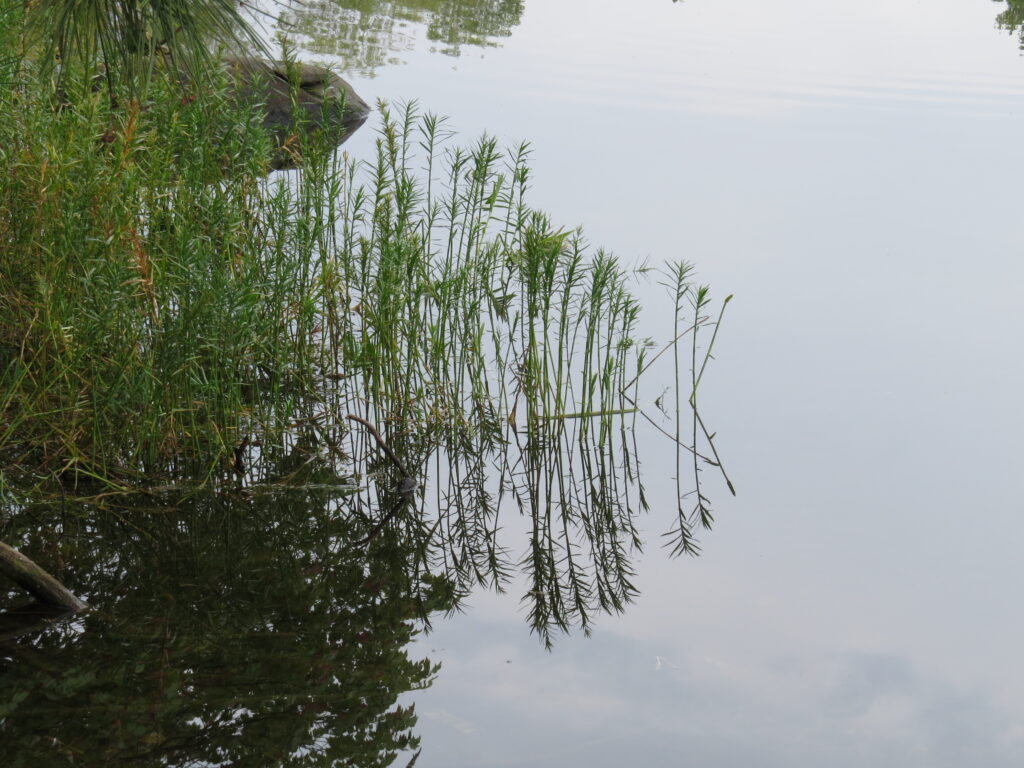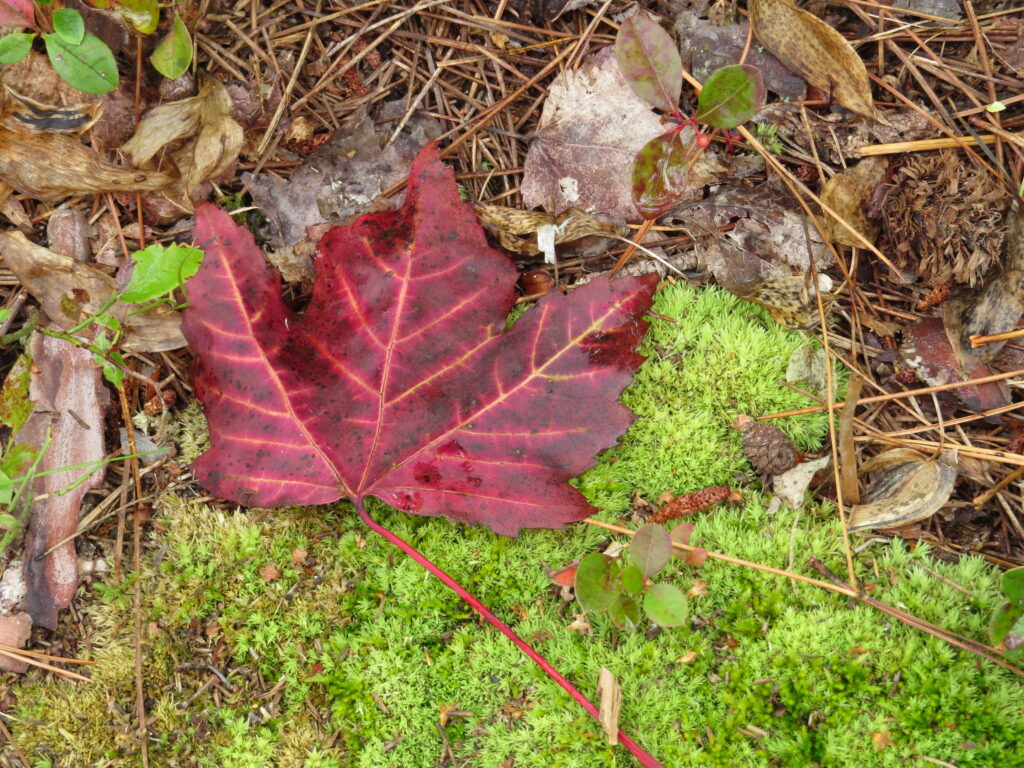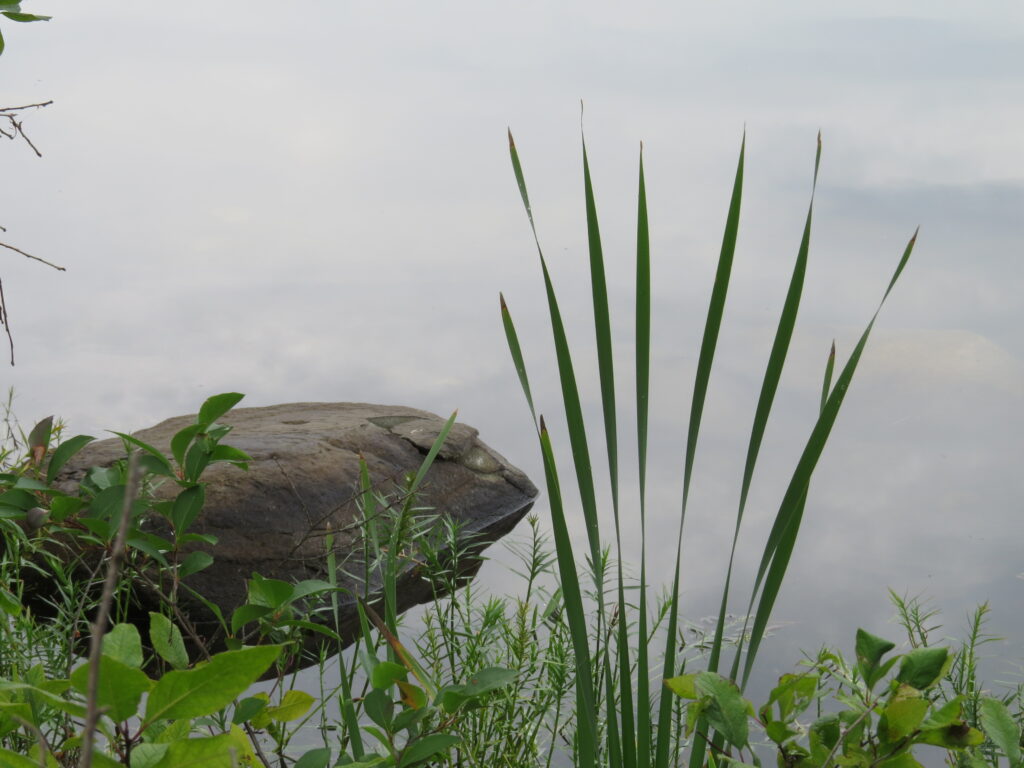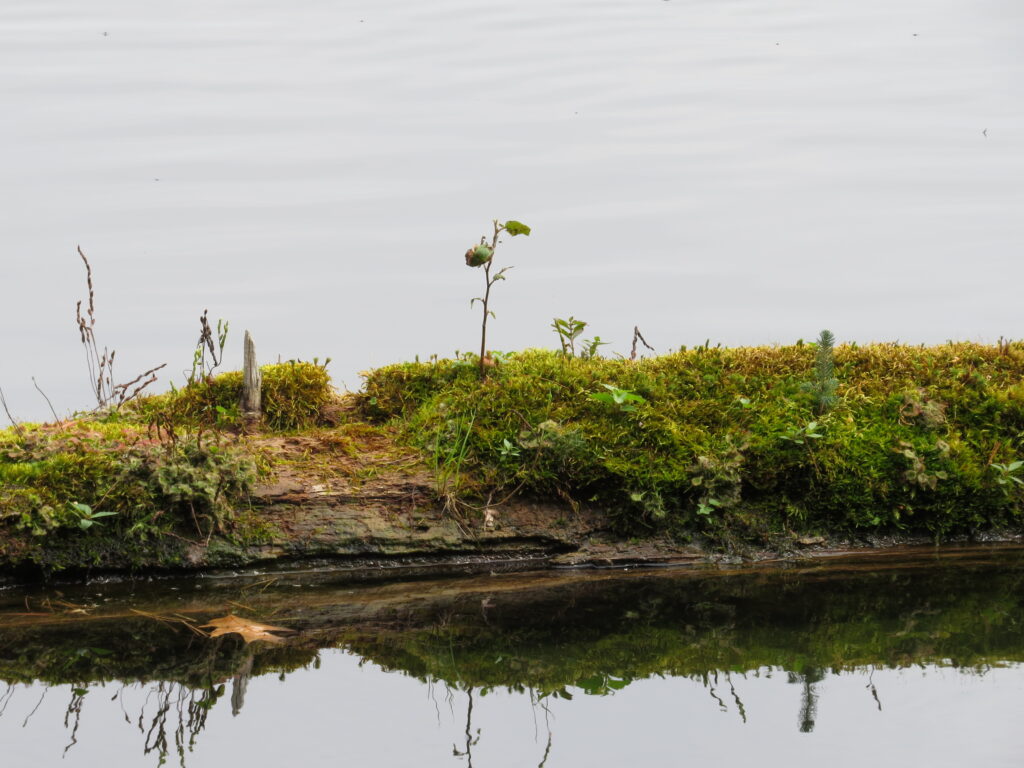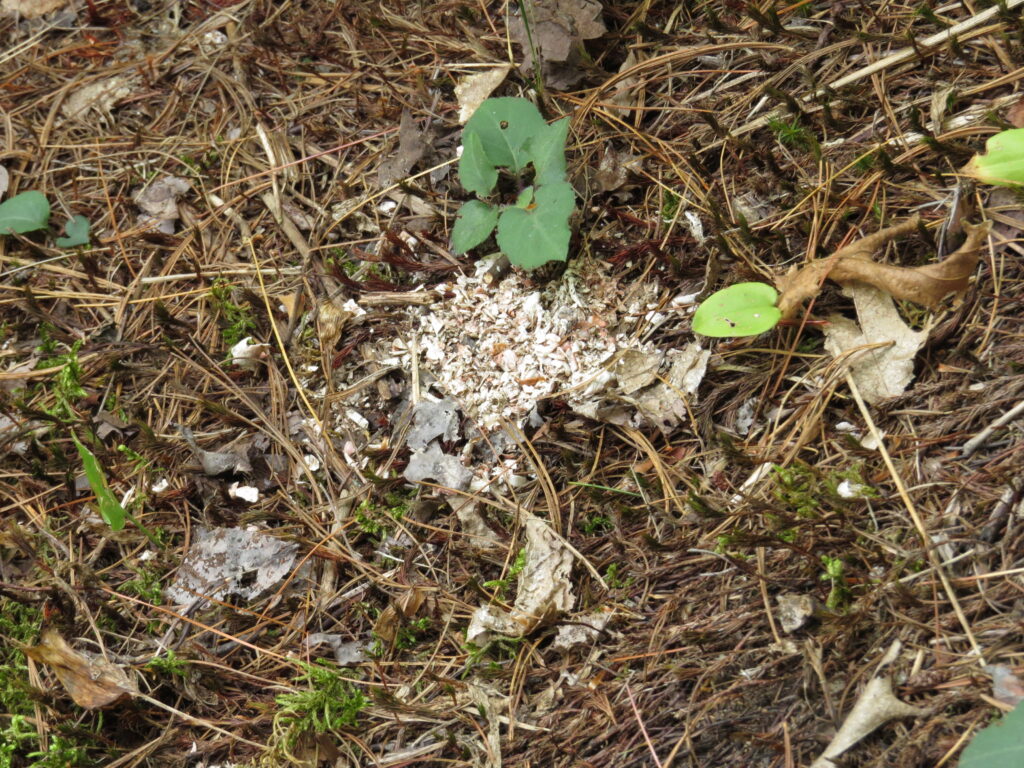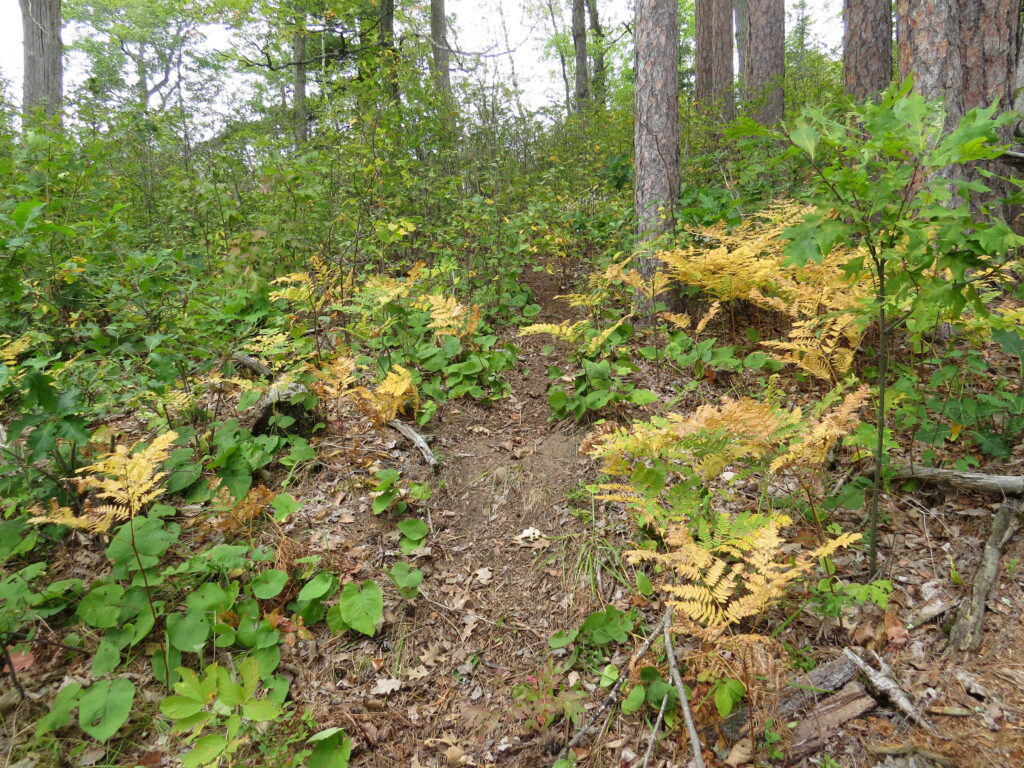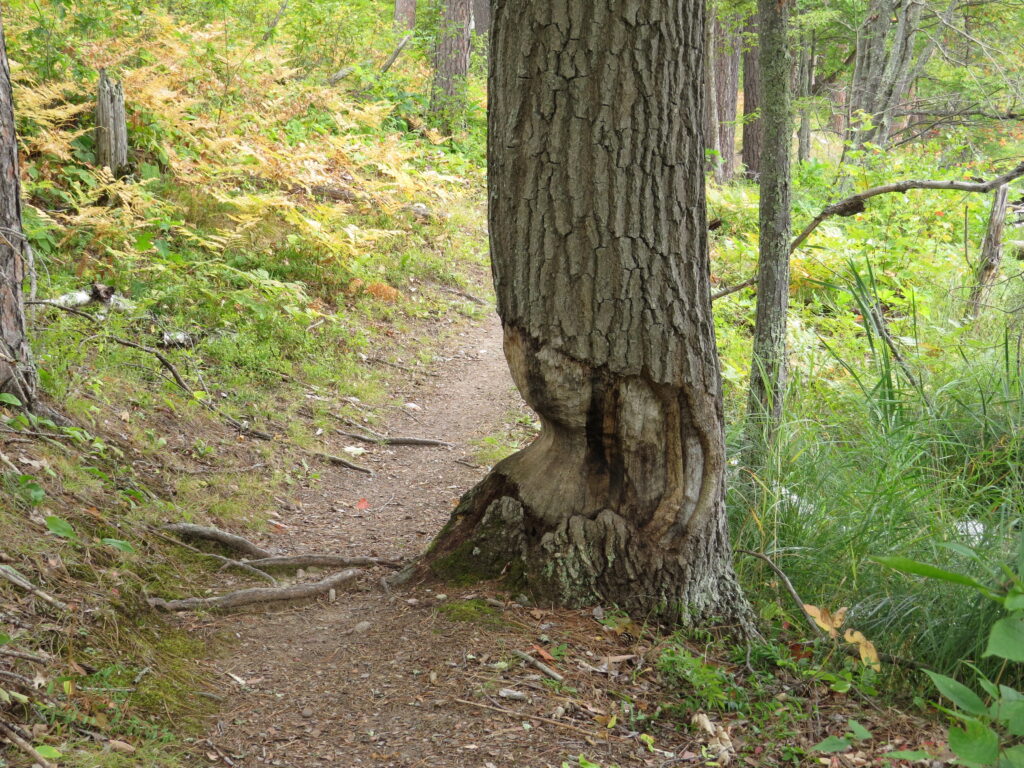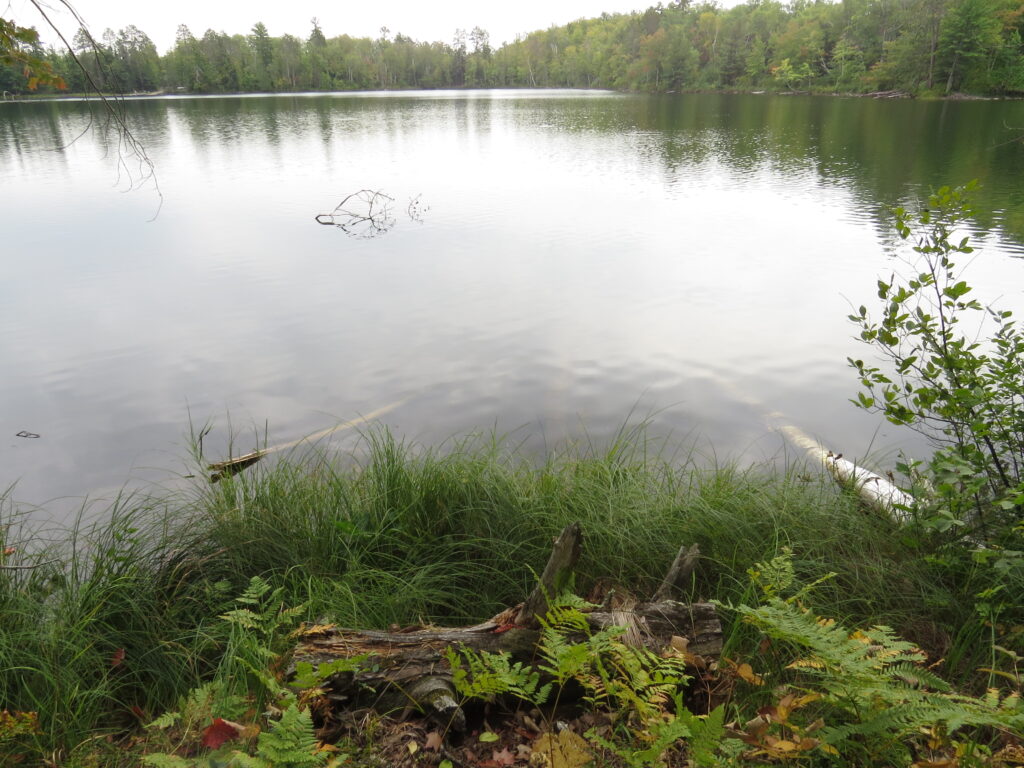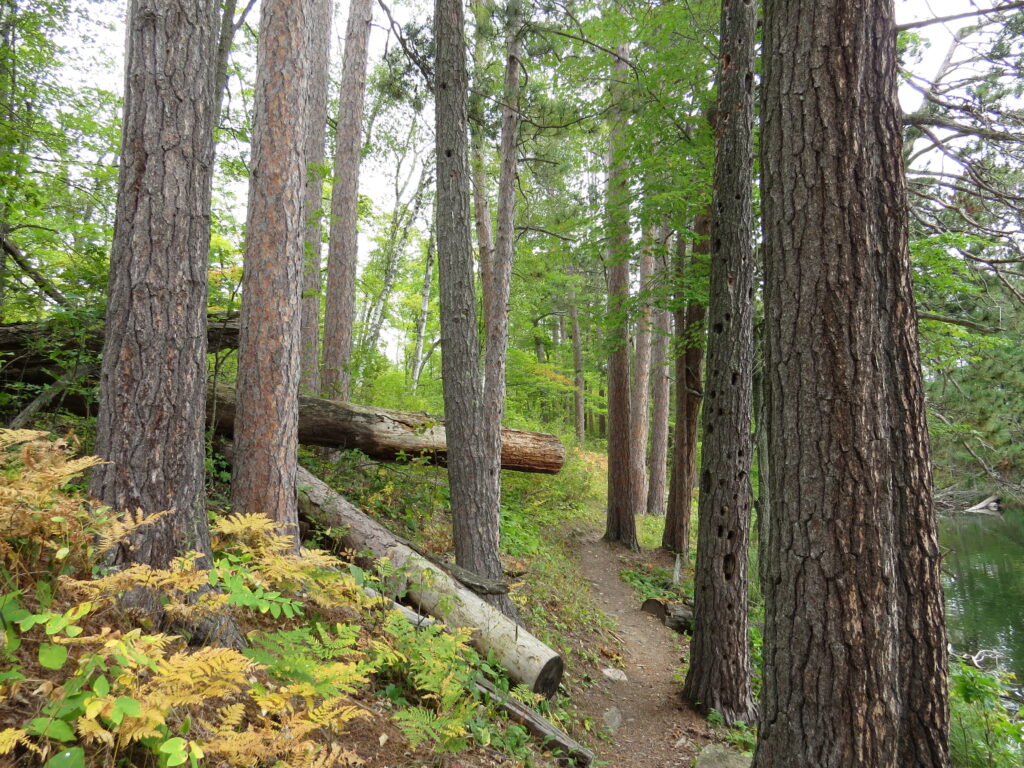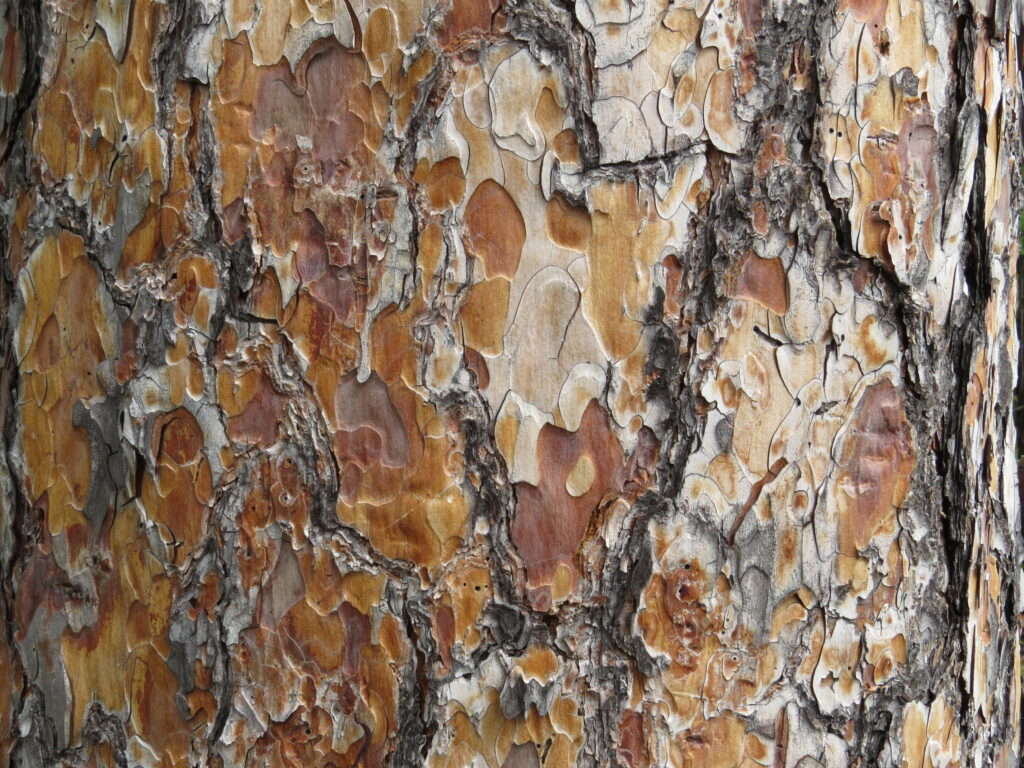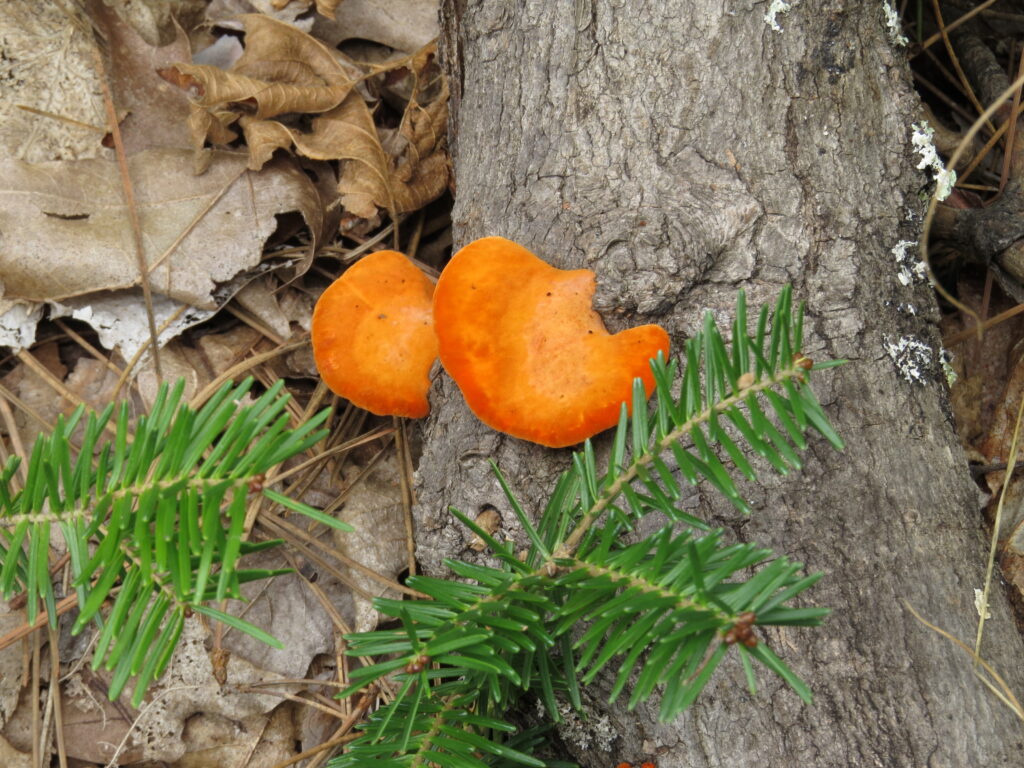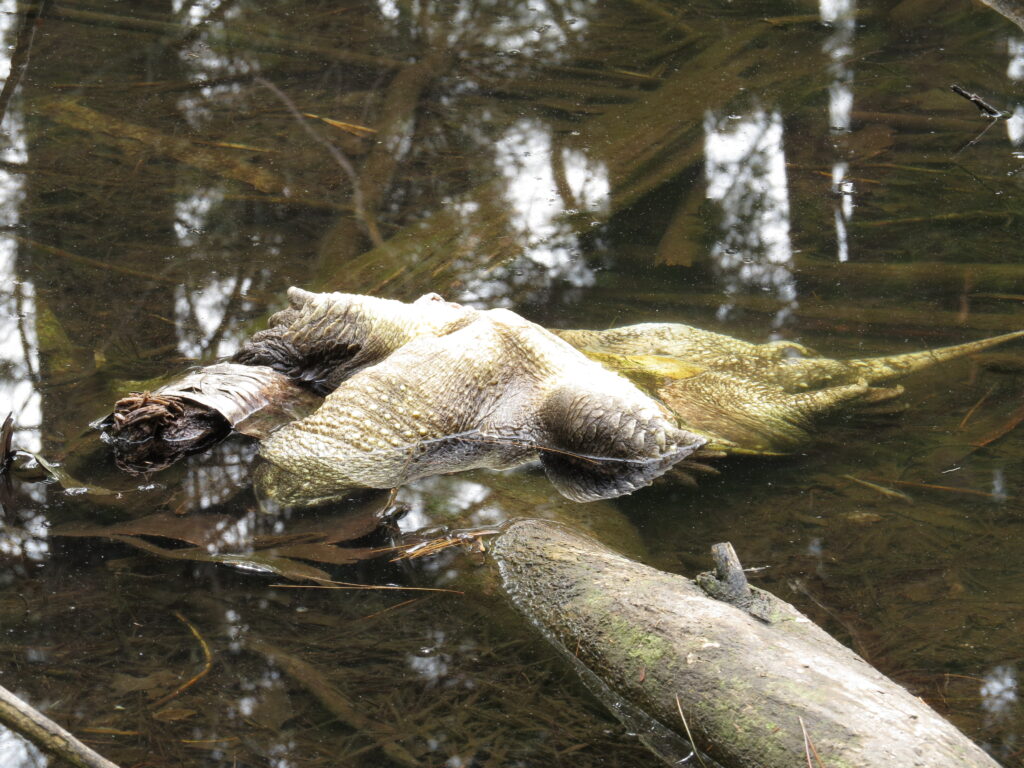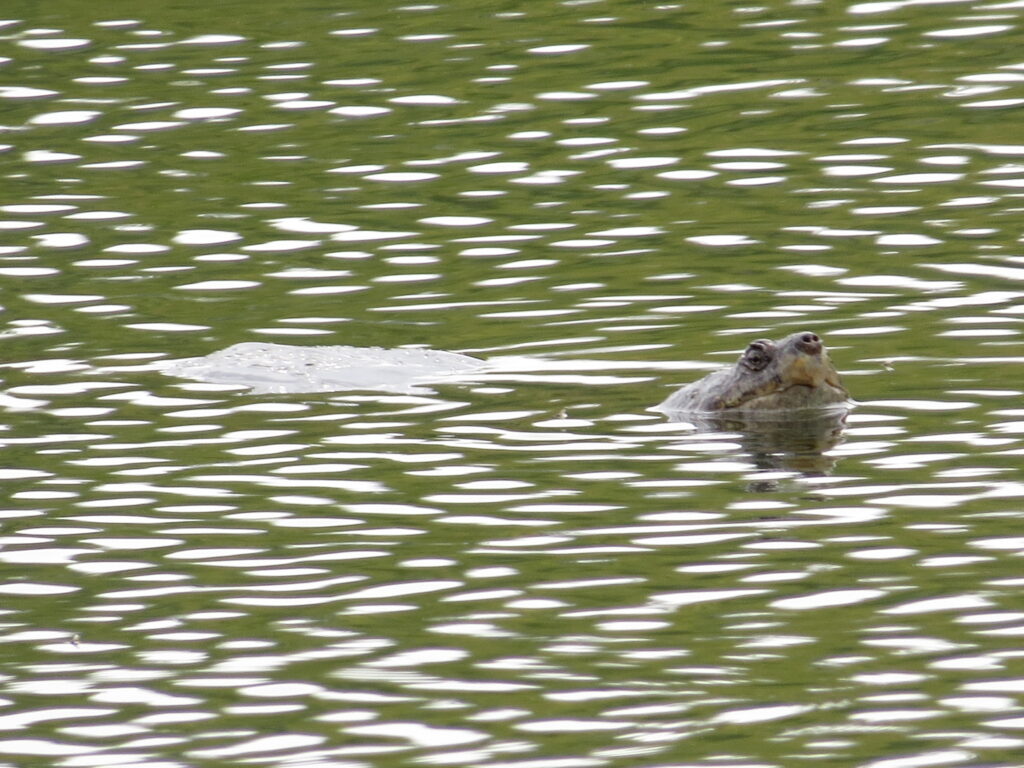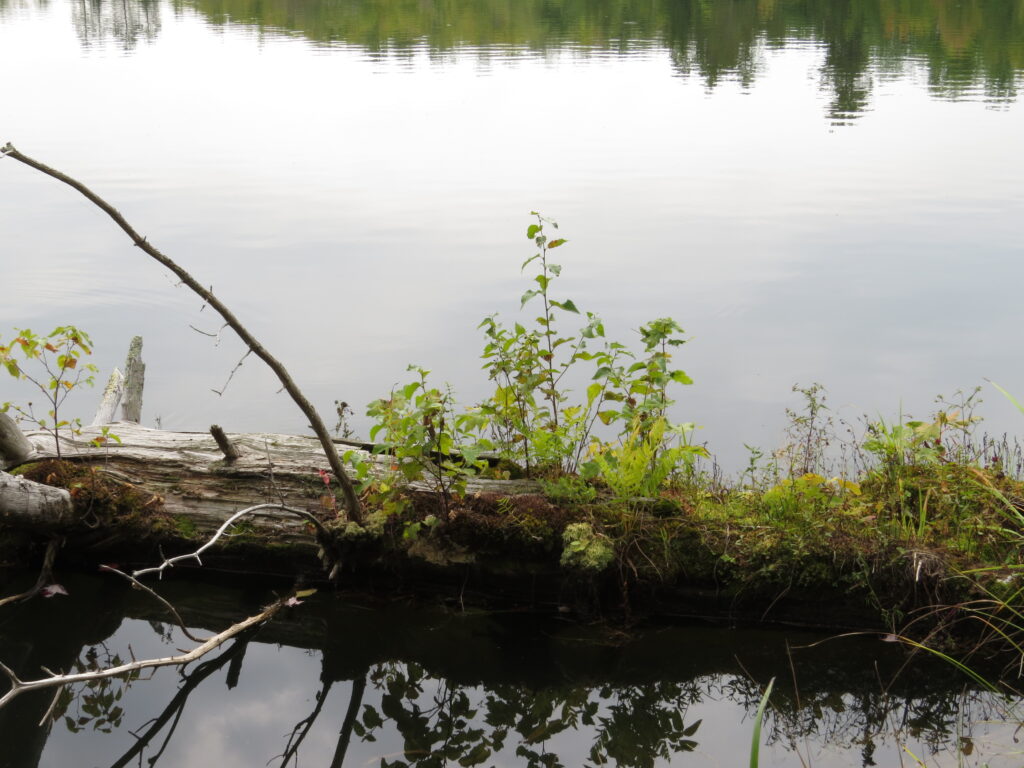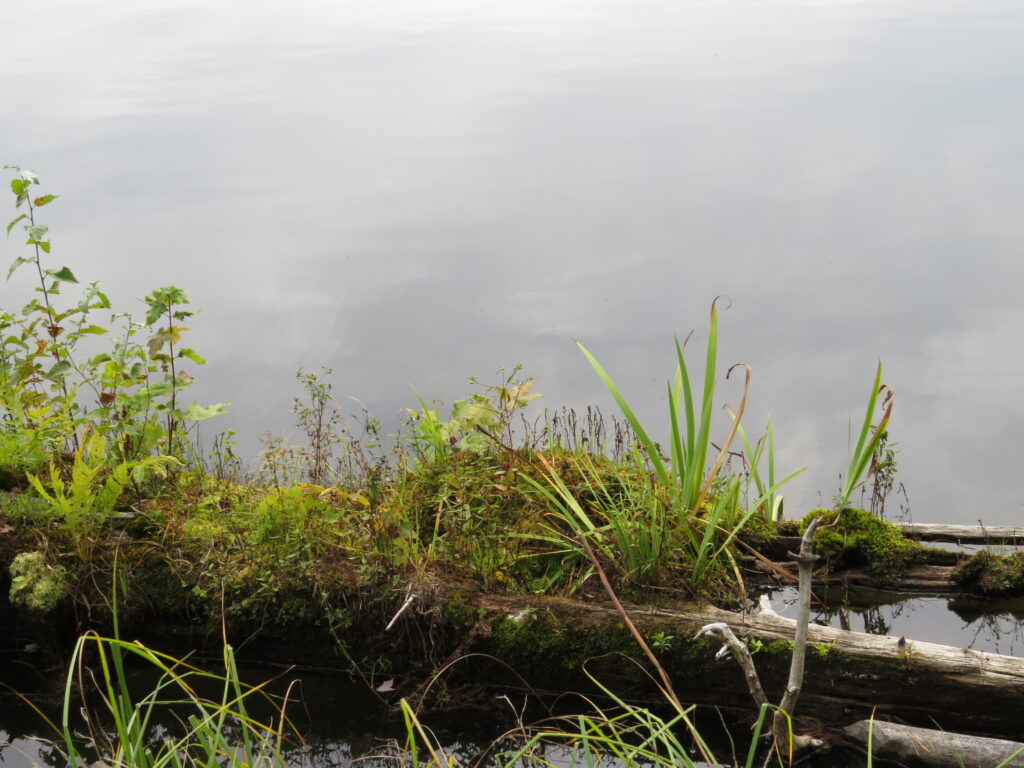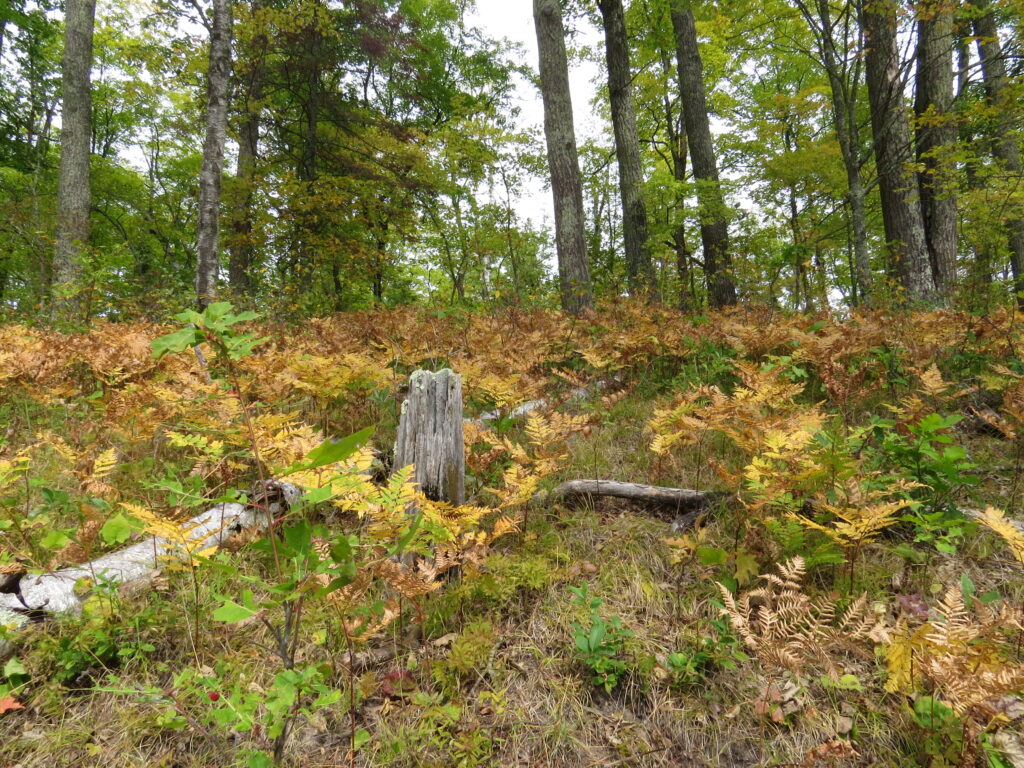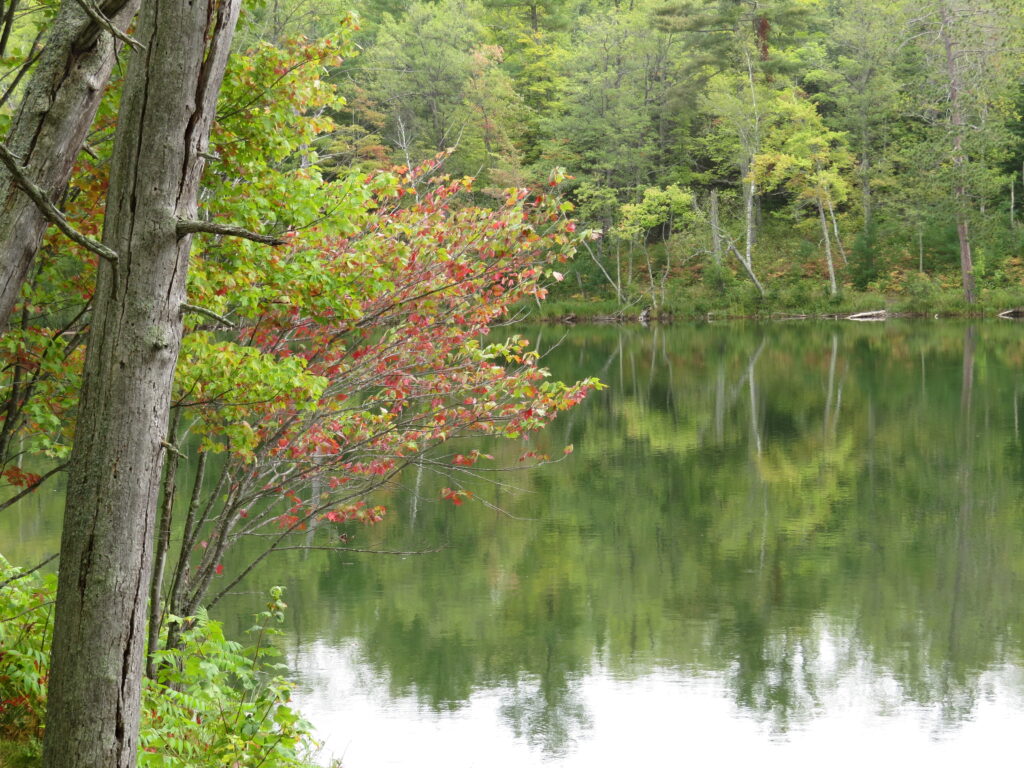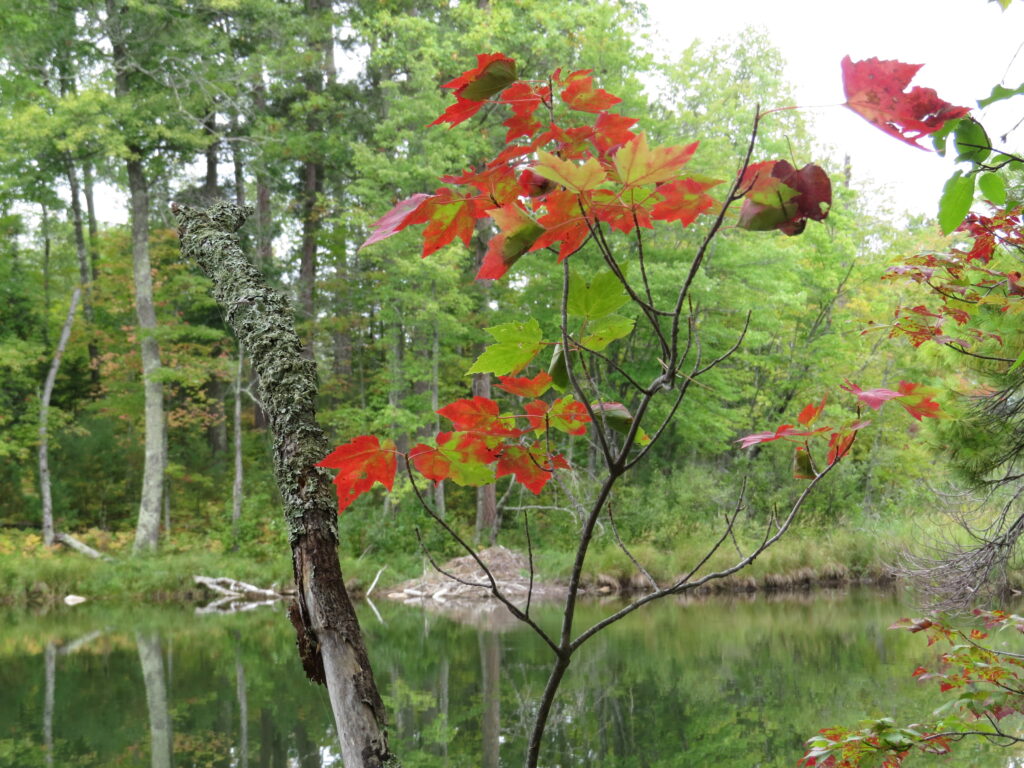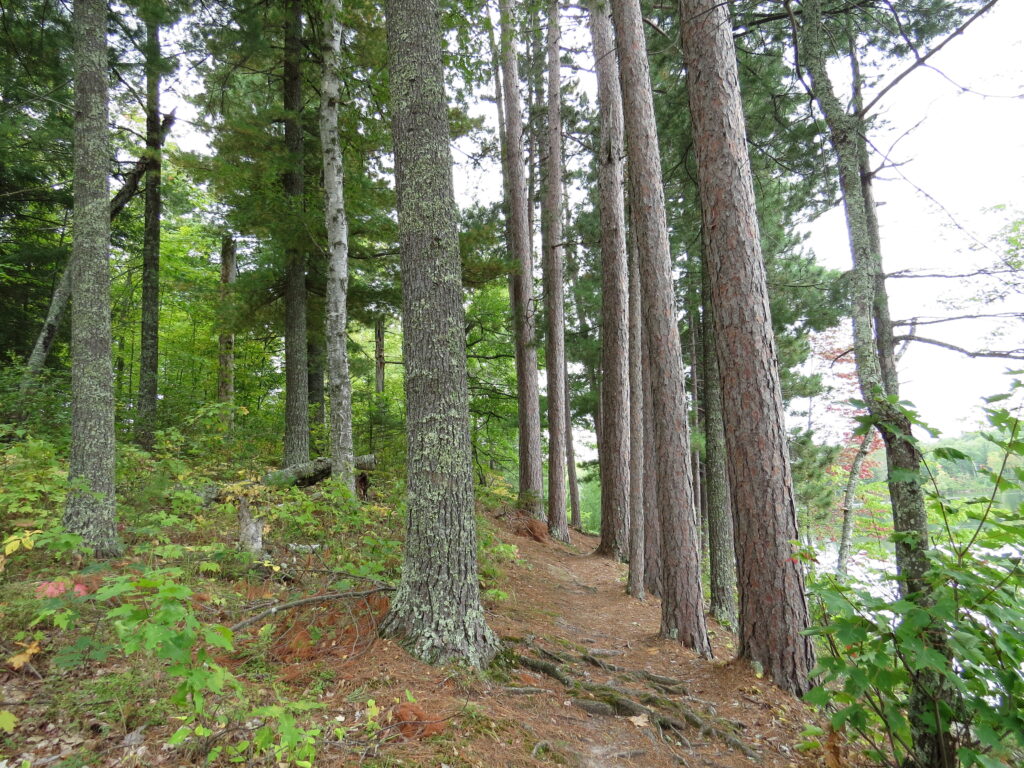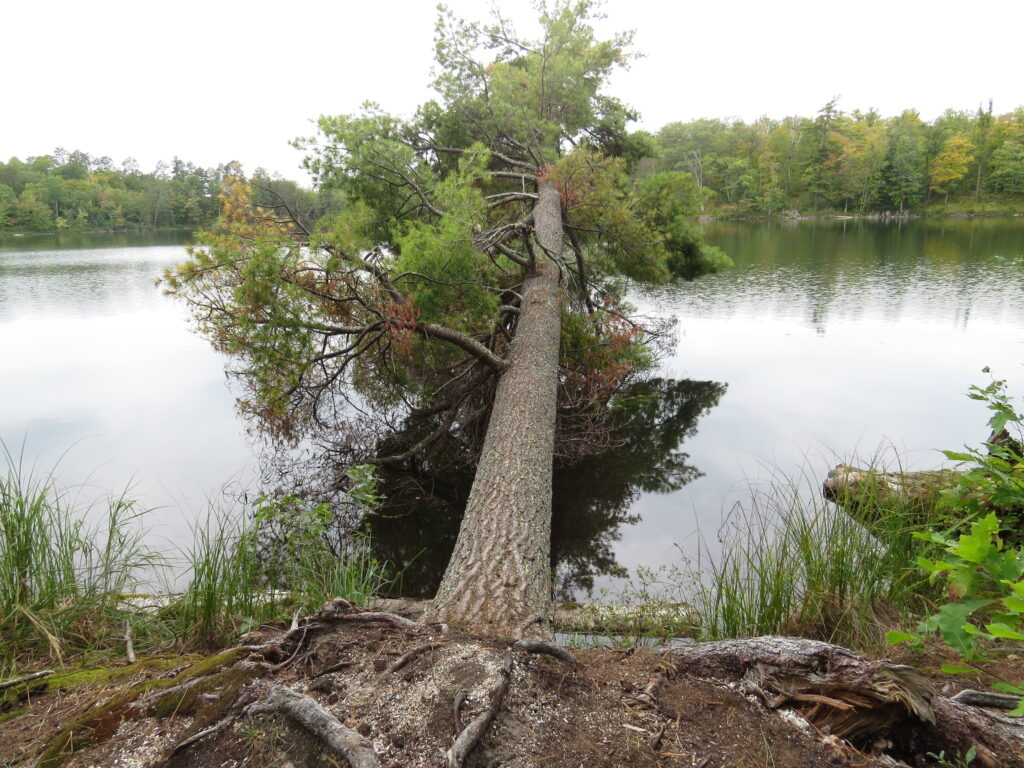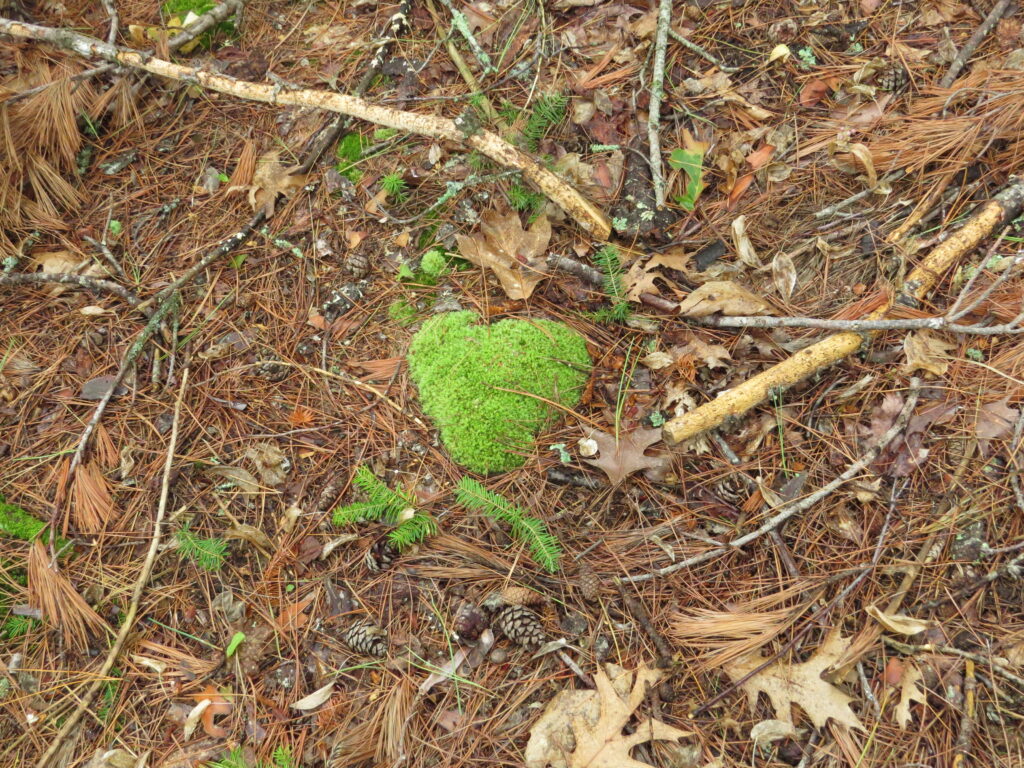Imagine your life as a lake. There’s a trail around the life lake that allows us to explore, day after day, this gift we are given. There is mystery, uncertainty, beauty, sustenance, and a calling of spirit that keeps us moving onward. Our lives are the ultimate exploration!
Our fourth hike at Savanna Portage State Park encircled Lake Shumway, the lake adjacent to the campground. Curious about the name, I found out ‘Shumway’ is the Americanized form of the French name ‘Chamois,’ which is a metonymic occupational name. In essence, it names a person by what that person does for a living—in this case, a person closely associated with the mountain goat ‘chamois’ or the leather produced from it. Interesting!
The beginning—of our lives or of the day—is pristine and fresh, misty and mysterious as to what lies before us. The colloquial saying “Today is the first day of the rest of your life” is true! Each dawn of a new day reminds us of that.
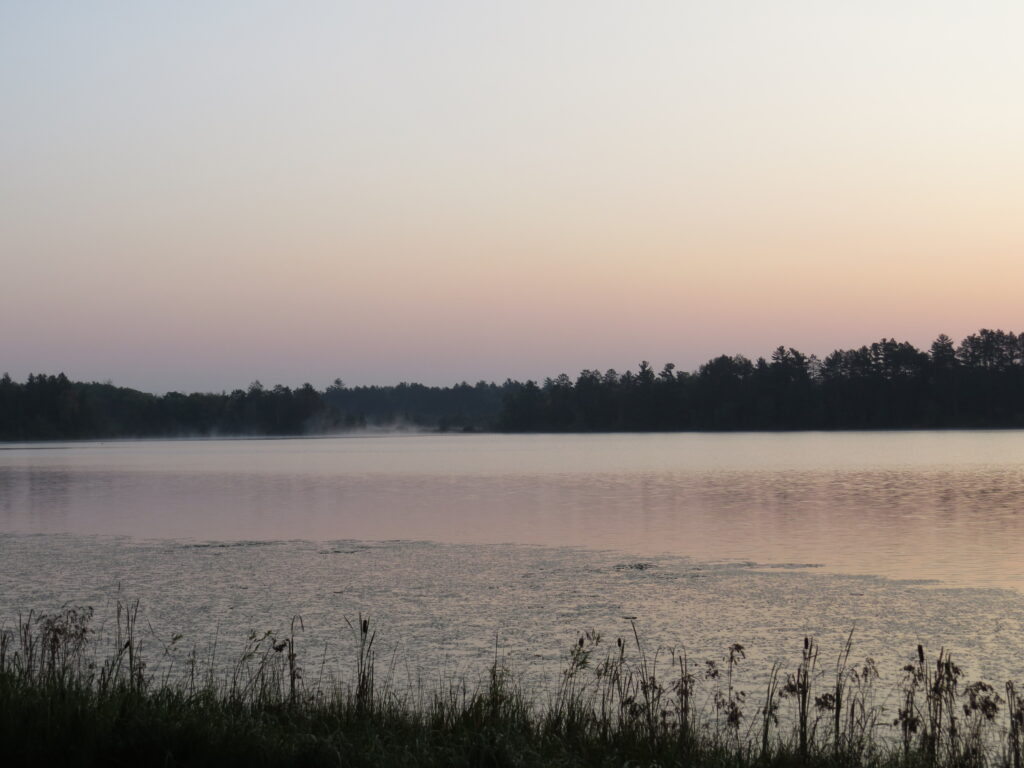
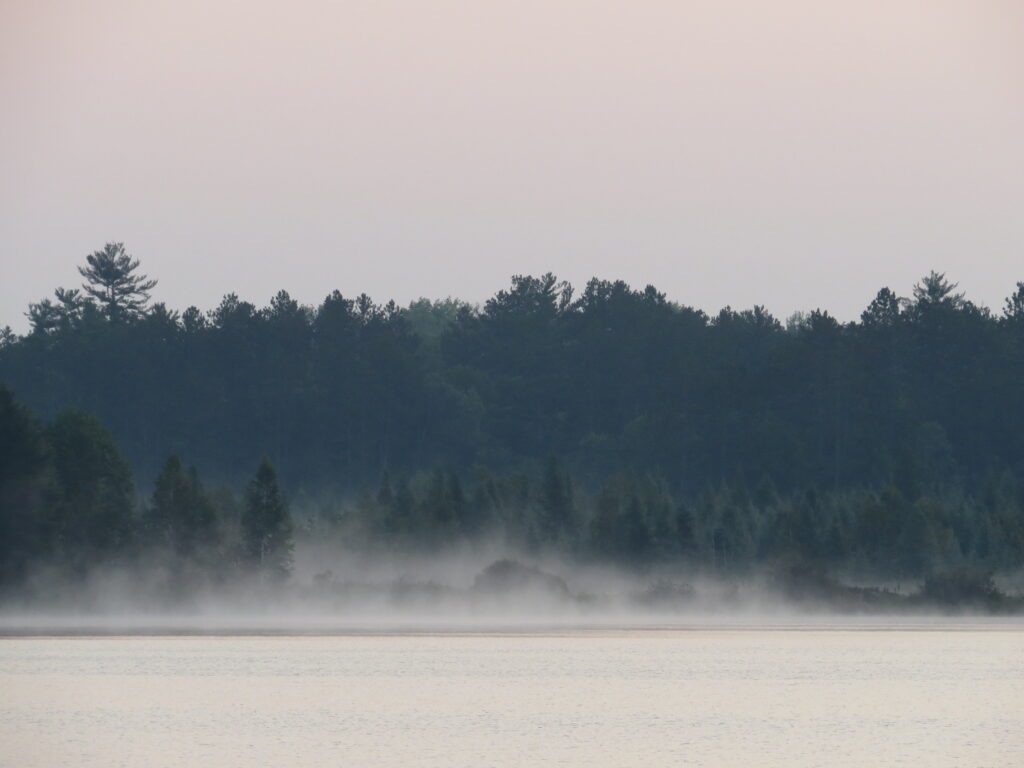
After our morning Continental Divide Trail hike and lunch, we began the loop around Lake Shumway. The lake reflected the early afternoon sky—a different look from the sunrise sky and water.
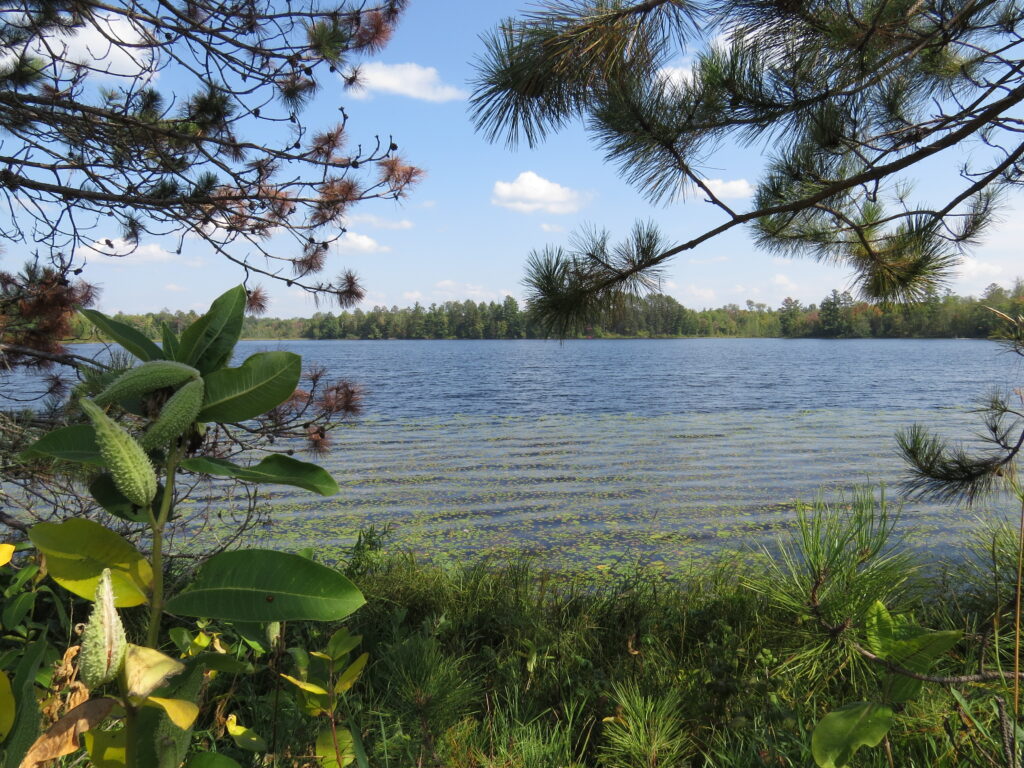
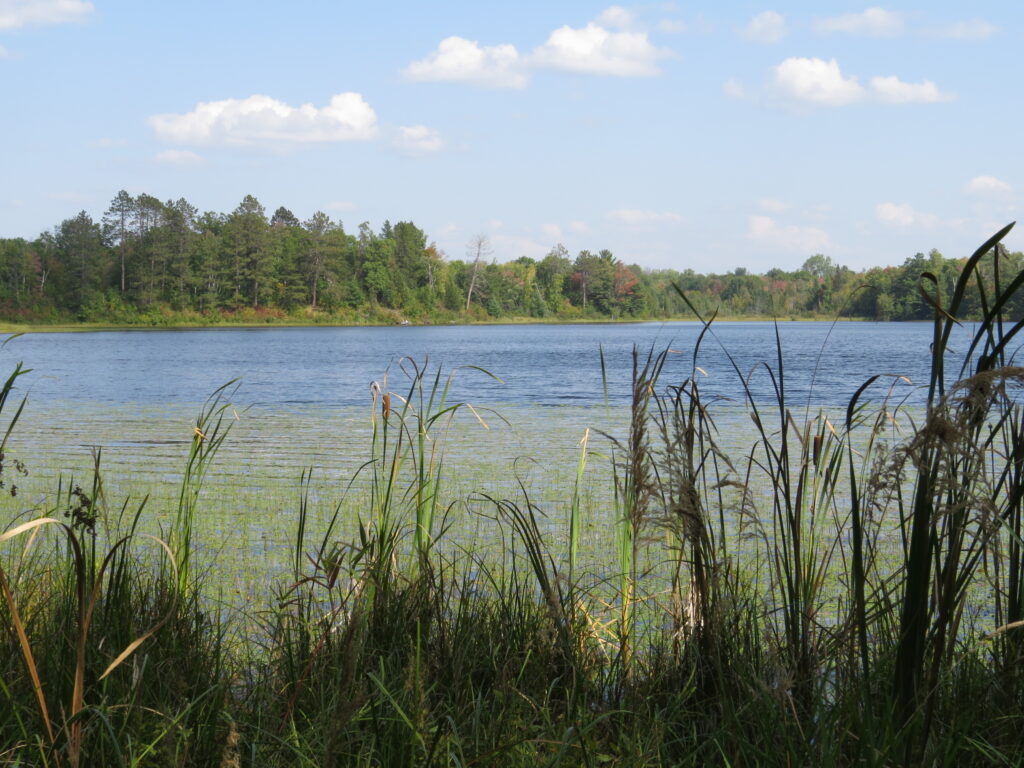
Much of the trail was covered in Pine needles which gave rise to the heady, comforting scent of glorious Pine with each step. We passed by the impressive work of a beaver who had felled a large Pine and removed a chunk of it from the trunk—his work was ongoing.
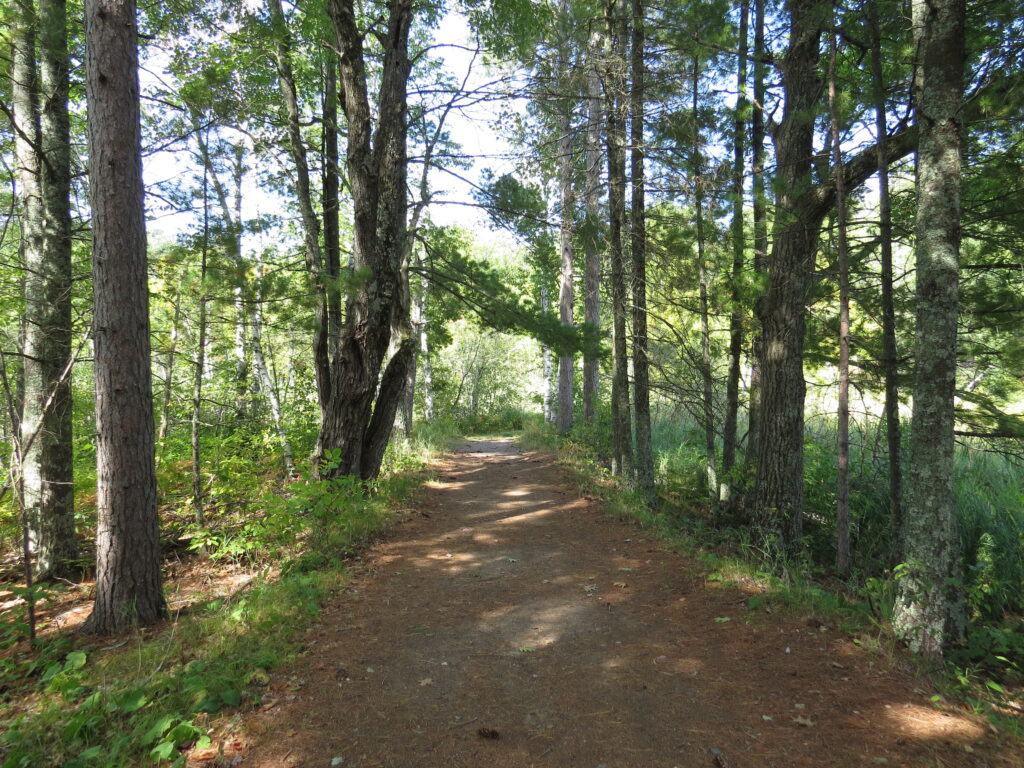
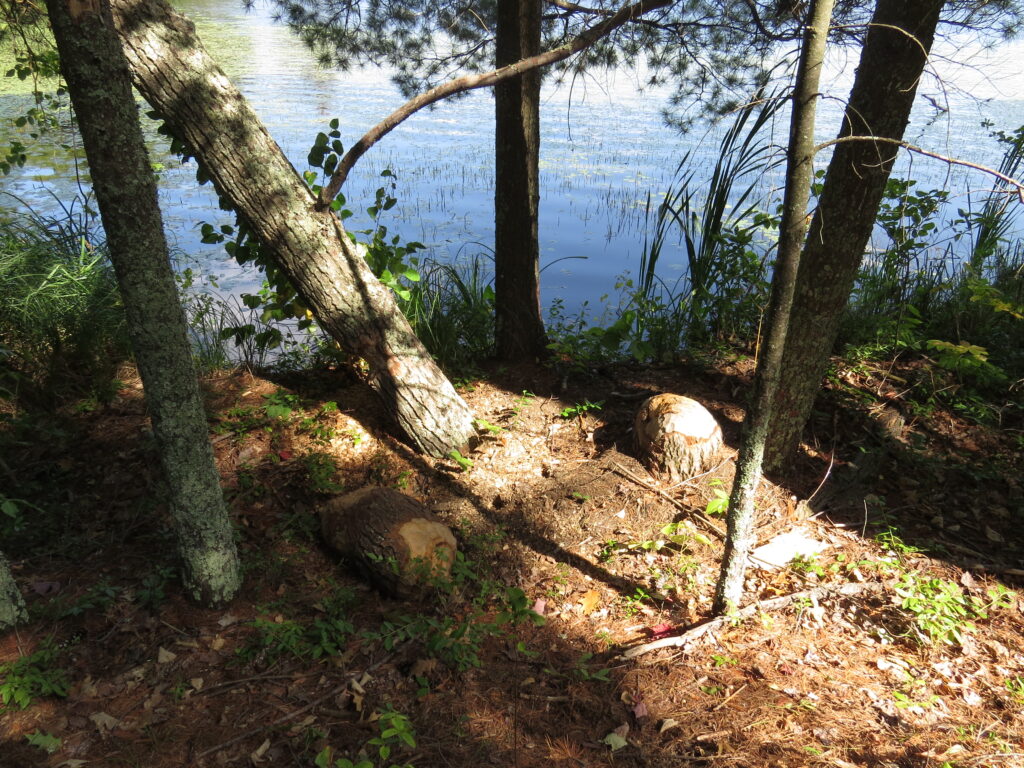
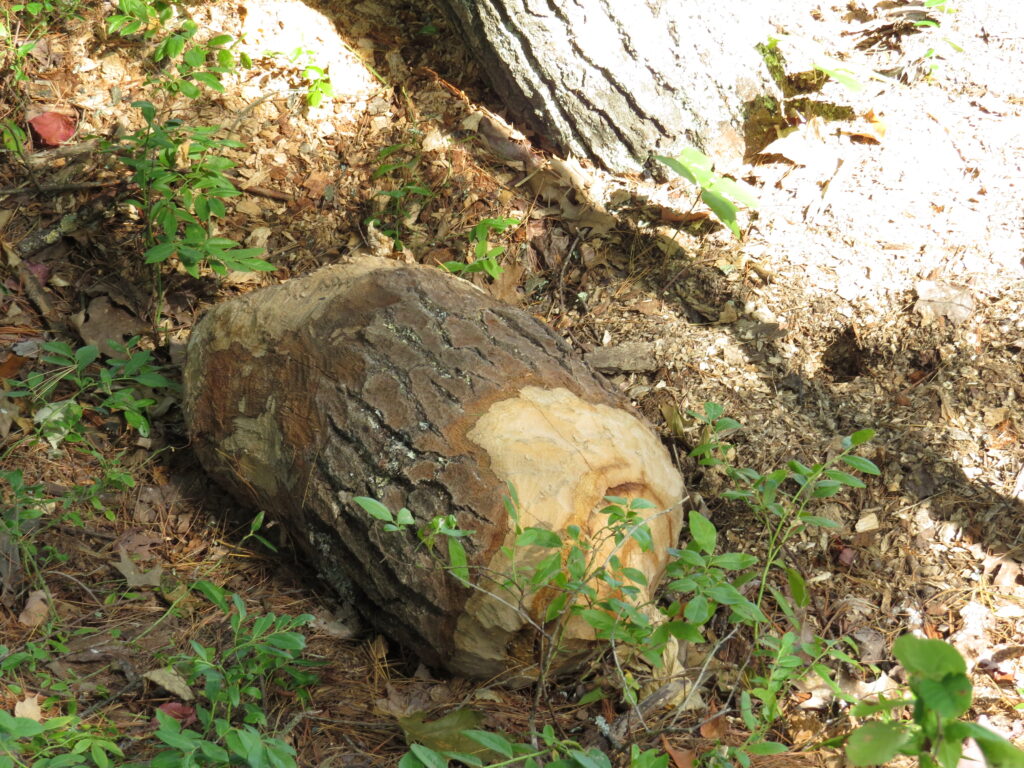
As with many places along the trails of life, we came to a divergence—one trail continued around the lake, another veered off into the forest towards a bog. We took the bog trail, knowing we would need to backtrack to continue around the lake. How many times do we have a choice in life, take a path, have to backtrack, ‘lose’ time or money, and/or find a treasure?
The bog was in a sad state—our Summer drought had taken its toll on the wetland. The mosses were dried up and discolored; luckily the rhizomal roots of Labrador Tea provided enough water to have kept them green. We found a few Pitcher Plants near Bog Lake with red leaves and dried, nodding flowers. The environment matters as to the flourishing of the members in any ecosystem/community. Temporary droughts/setbacks can be overcome, but continued distresses often cause permanent damage.
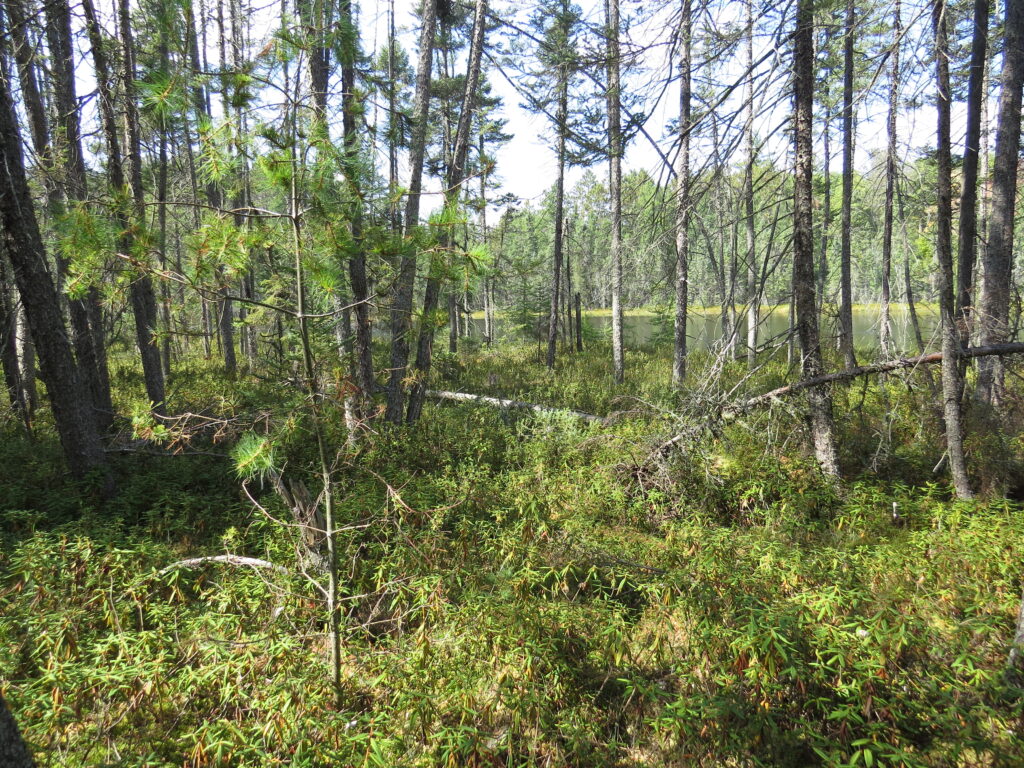
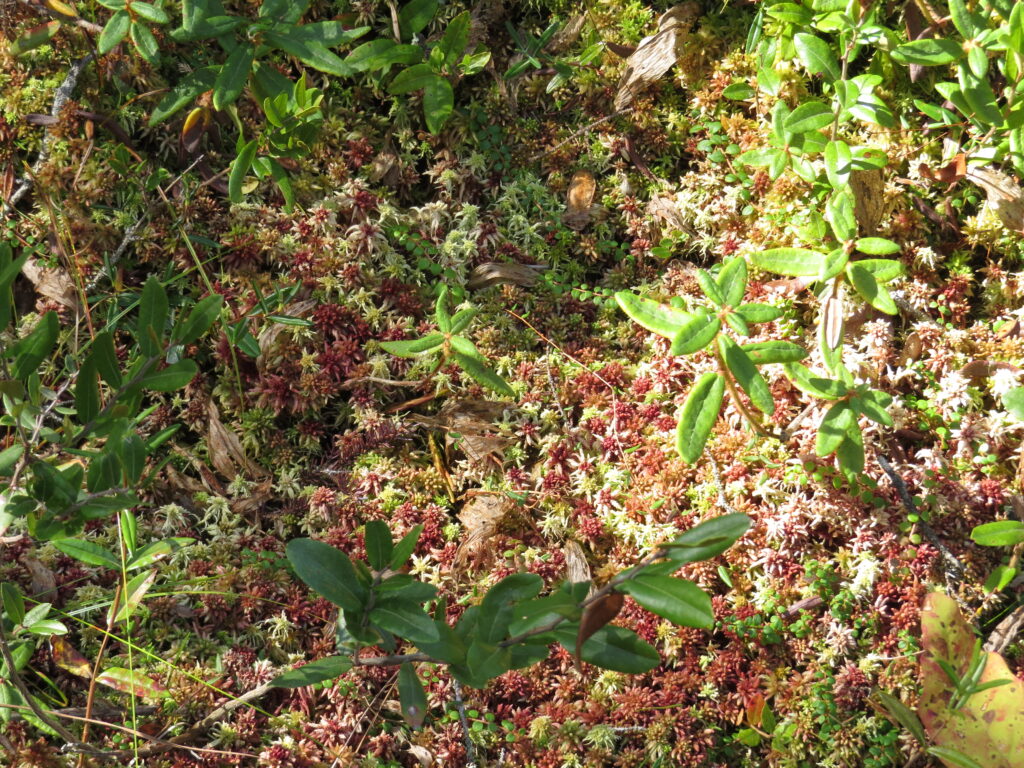
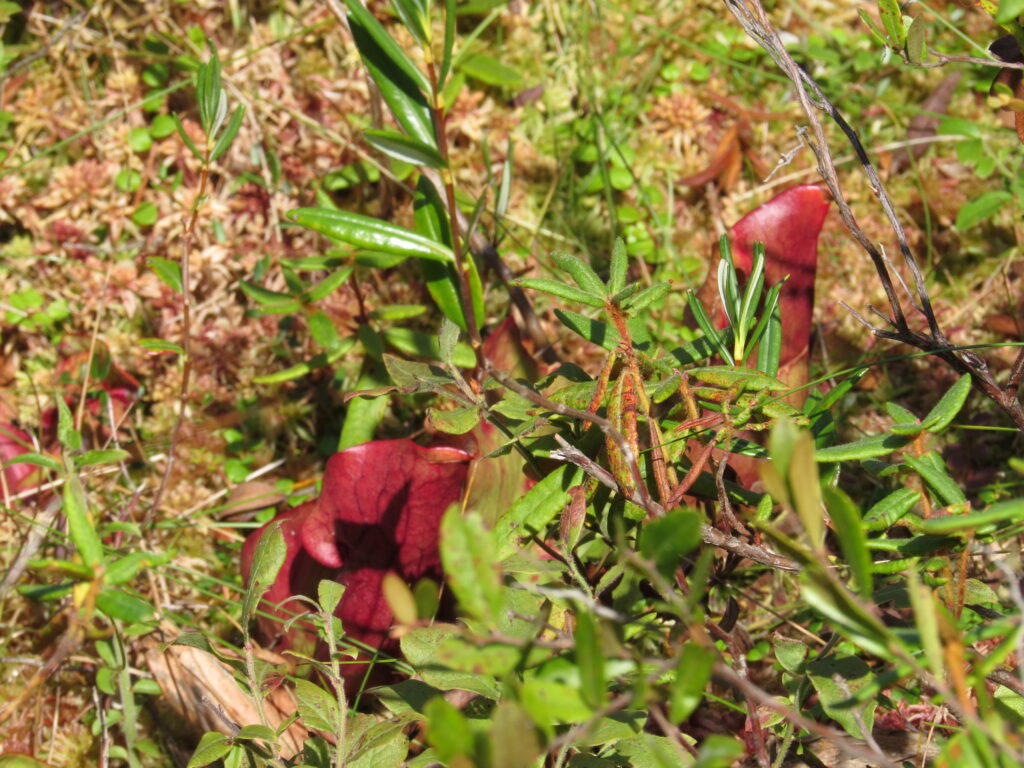
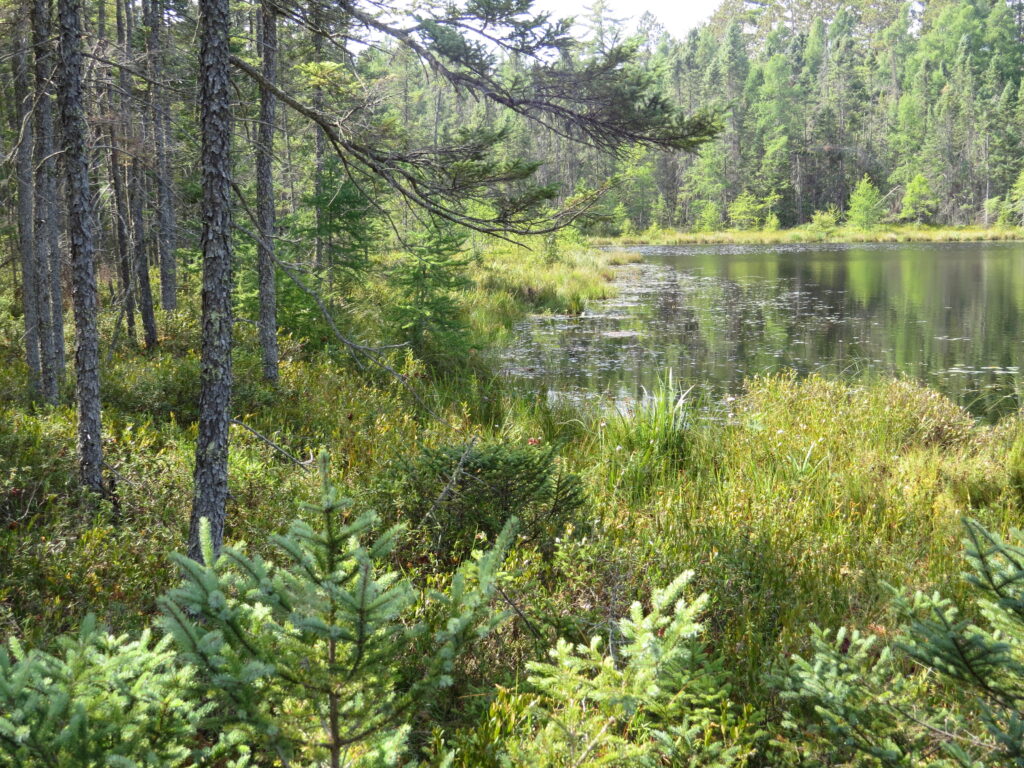
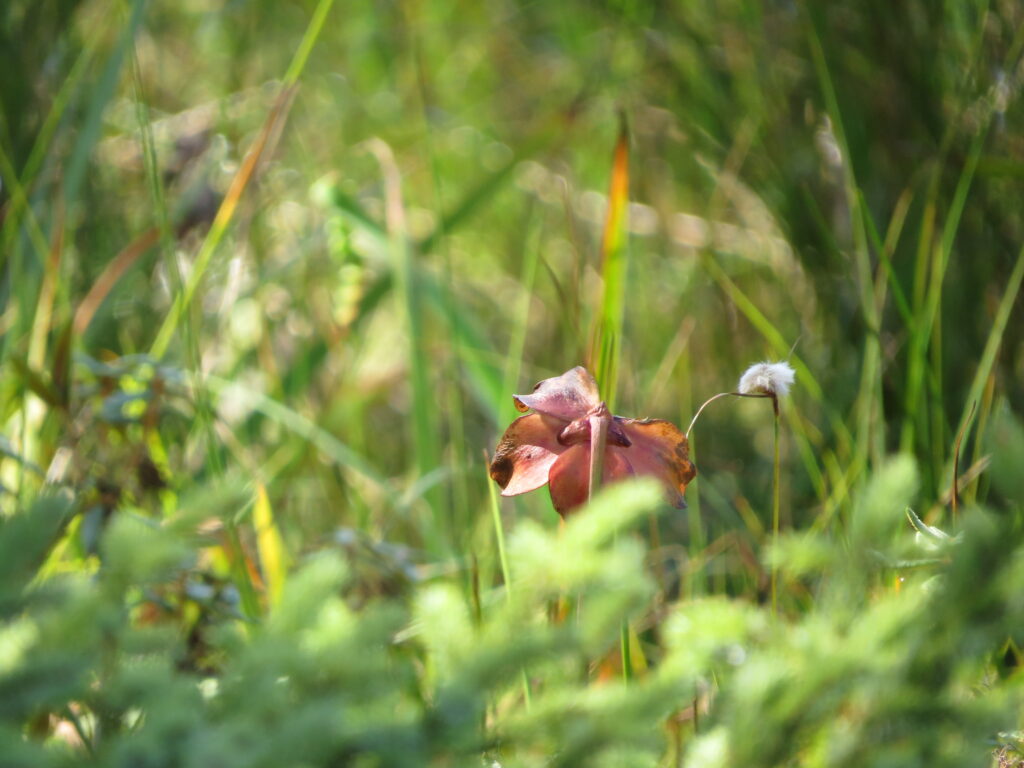
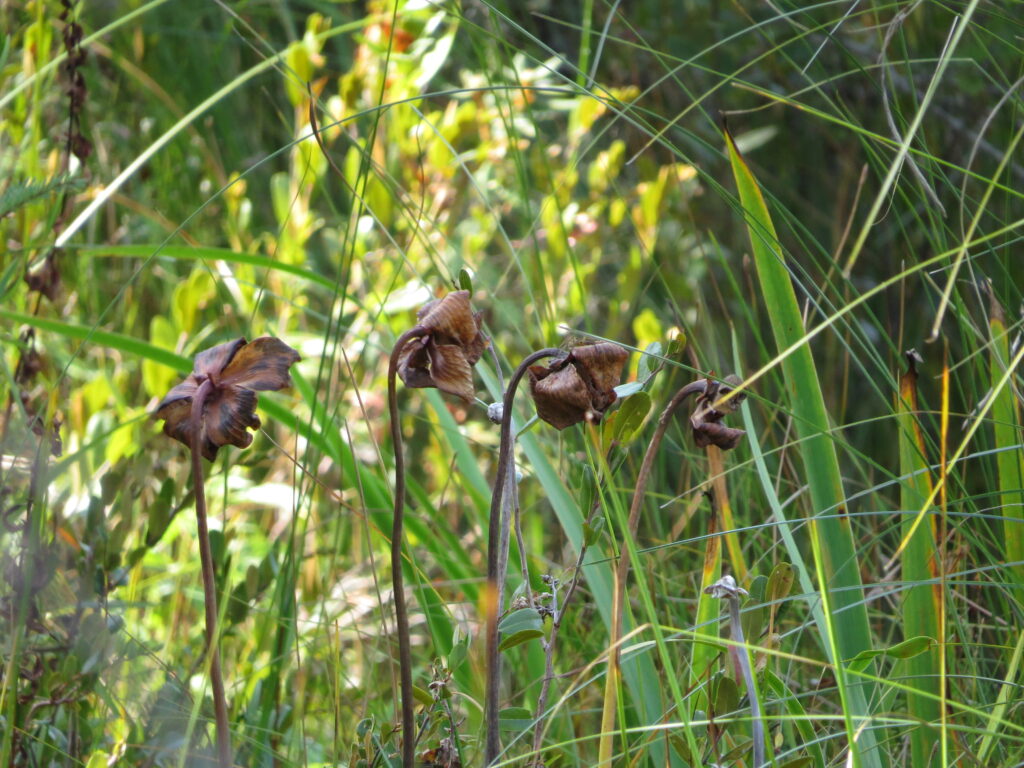
We backtracked back to Lake Shumway trail and found the lodge of the busy beaver. He had a great place to live in the protection of a jutting peninsula.
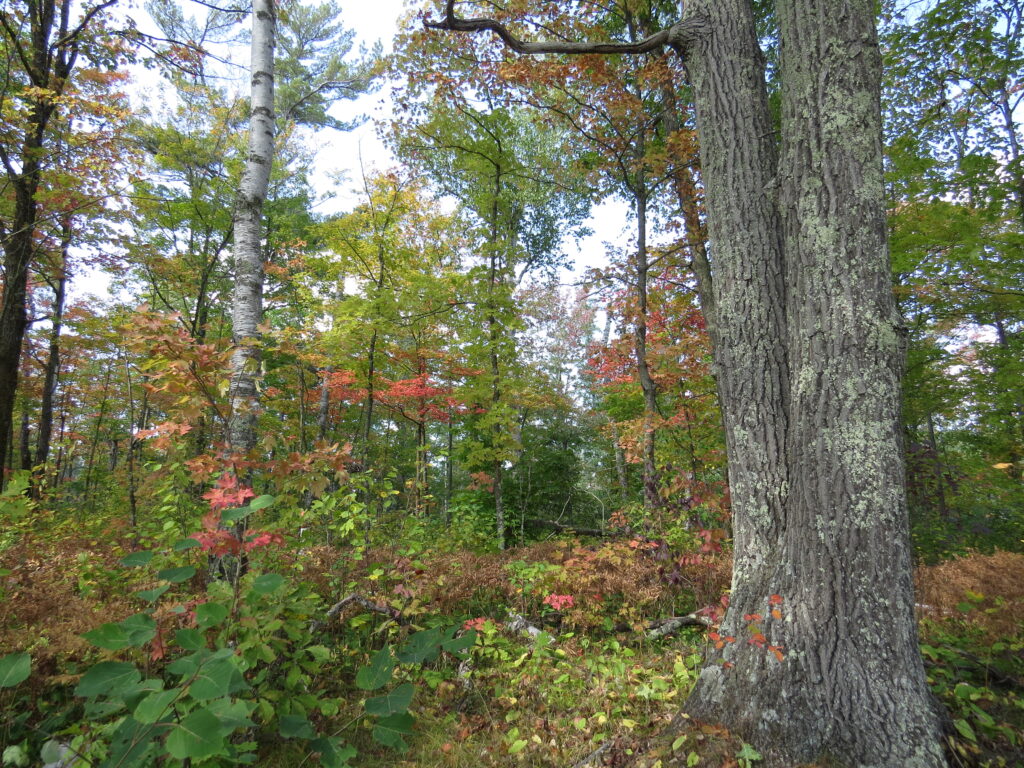
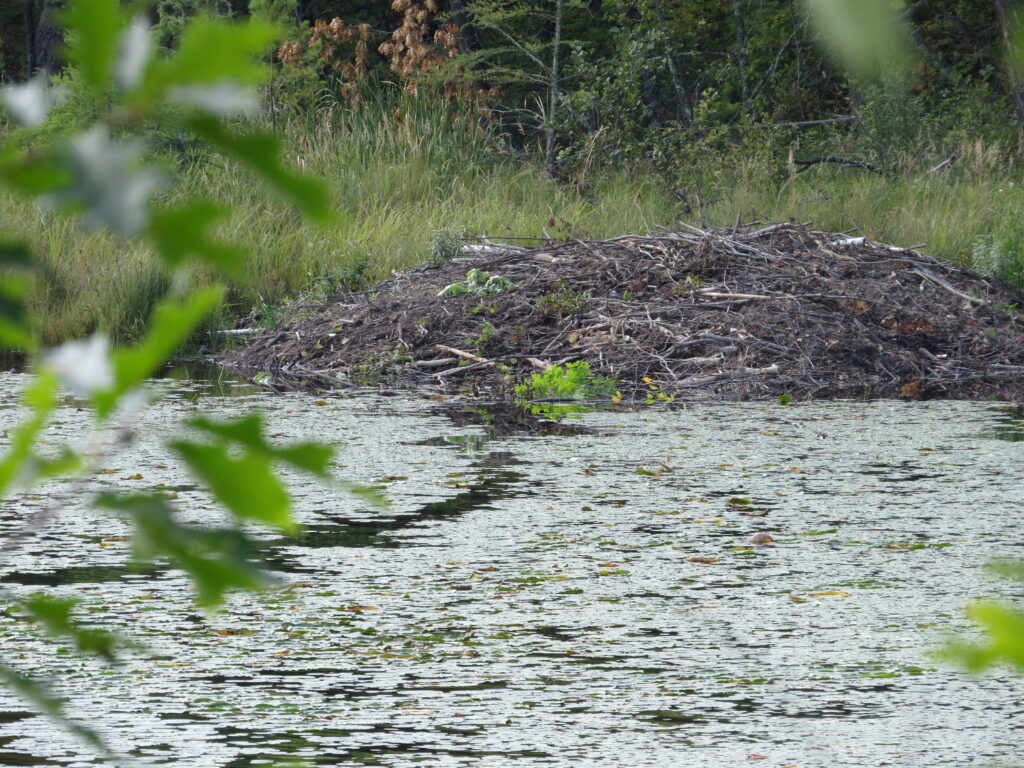
We boardwalked over a stream and wetland that still had rosy blossoms of Joe Pye Weed and a bright array of yellow Sneezeweed. Beautiful ‘weeds’ in just the right places.
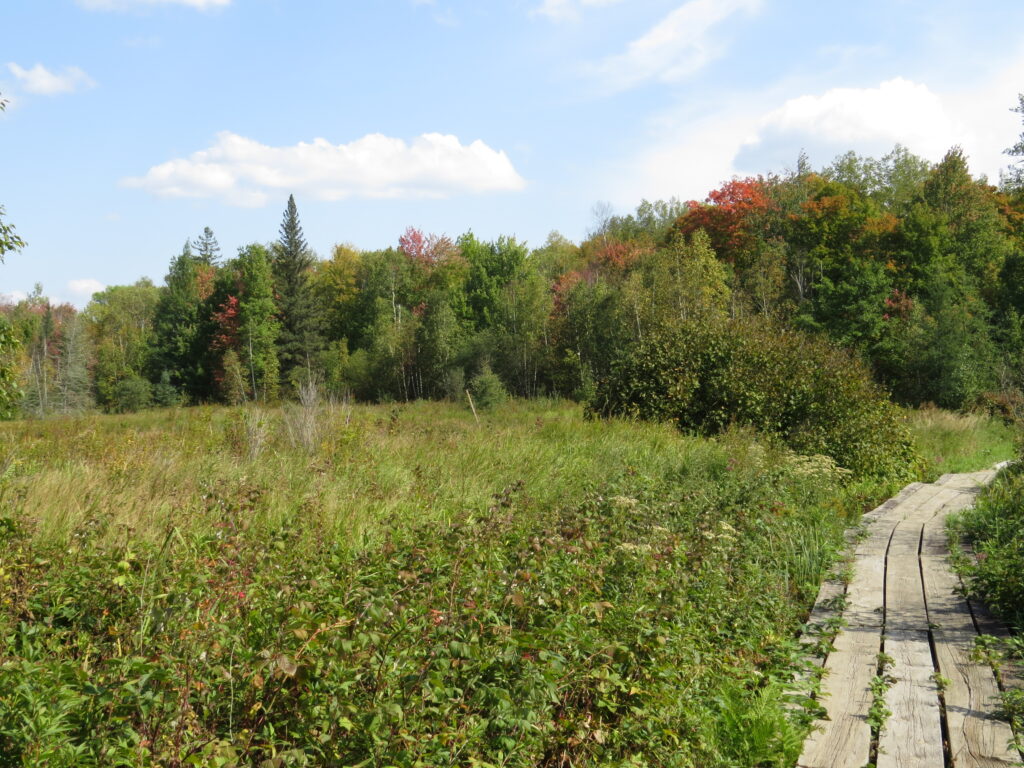
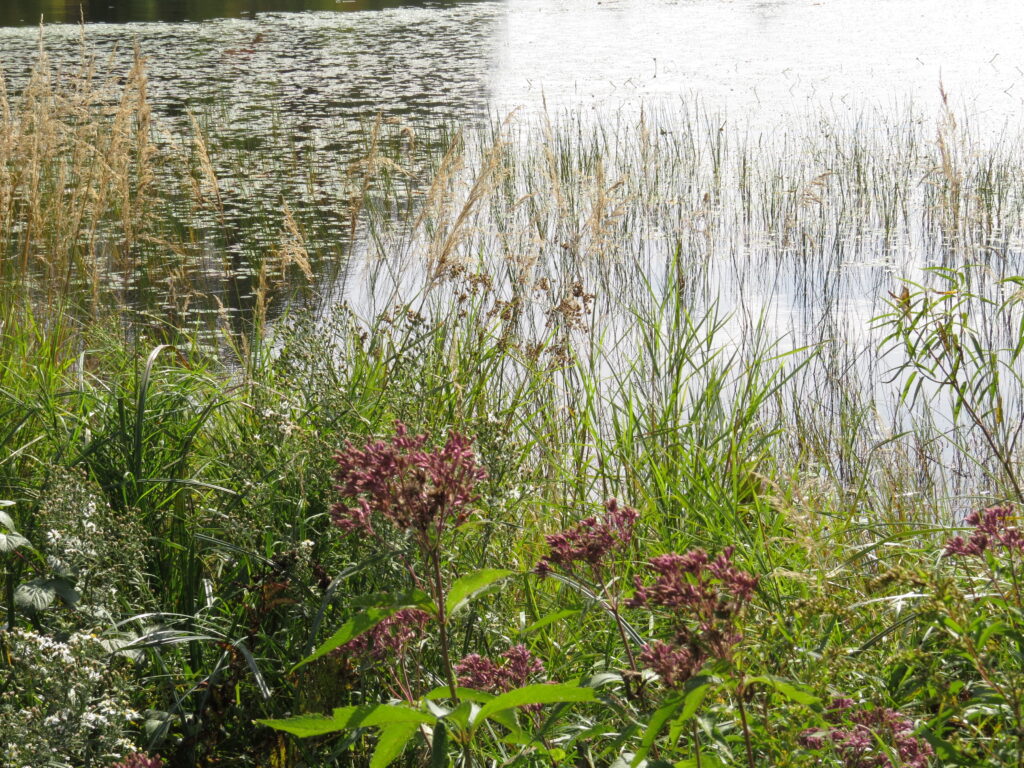
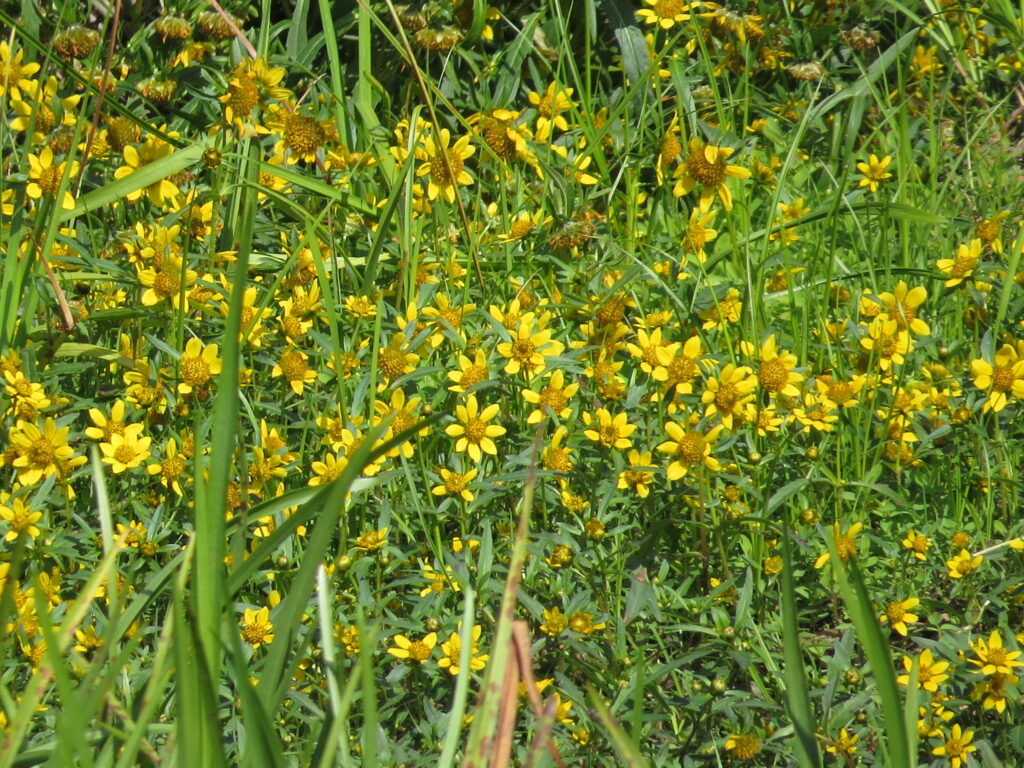
The trail rose in elevation where Maple trees lined the path. We crunched through red leaves that had fallen in the early Fall. Sunlight dappled the dotted trail.
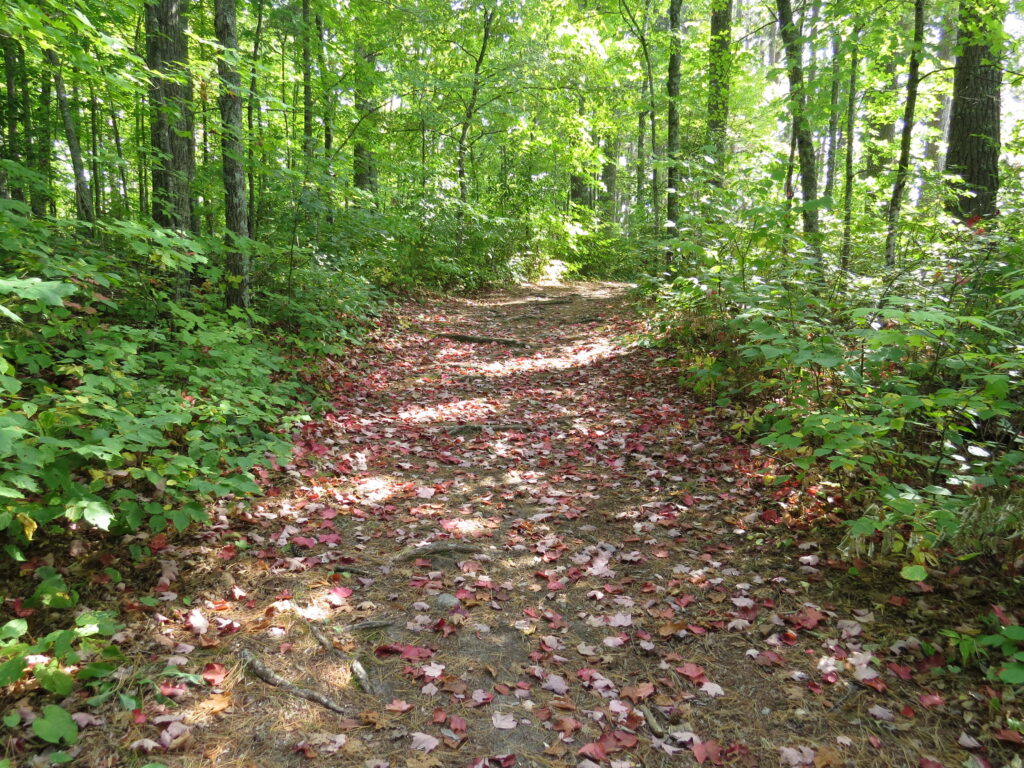
A stand of Pines lined the shore about halfway around the Lake. It was a peaceful place to loiter, to stand back-to-trunk with a tree to breathe in the beauty.
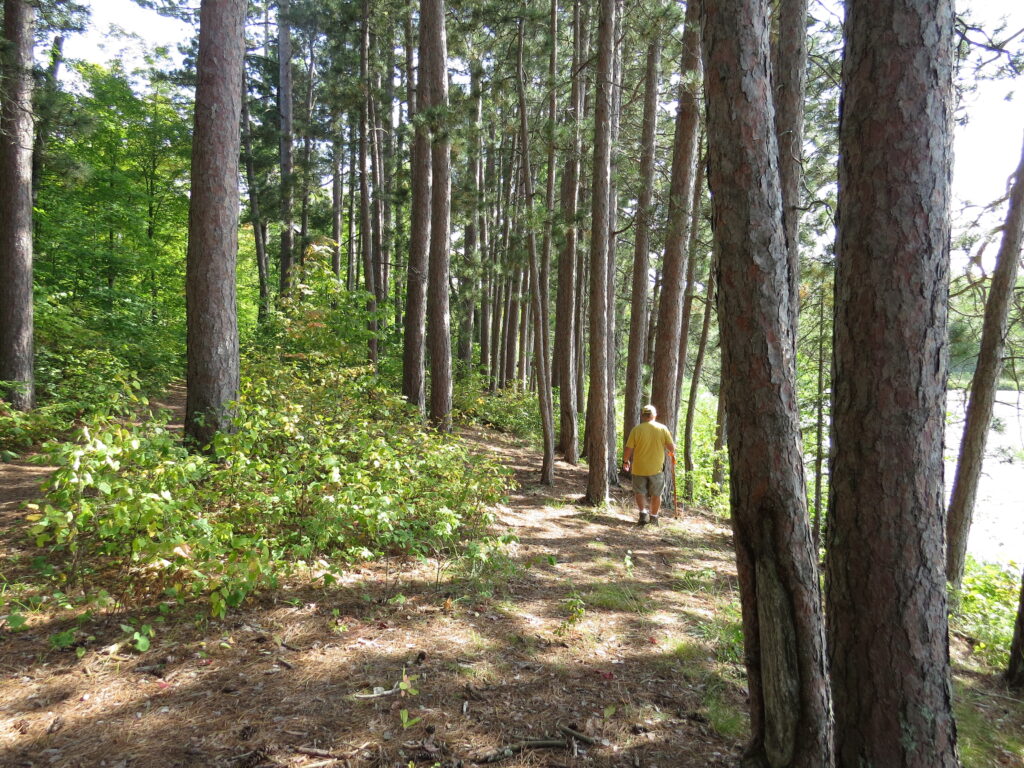
Two-thirds around the Lake, we left the water’s edge to skirt a wetland area. Again, we climbed up into the forest hill until, again, we came to another fork in the trail. After examining the map, we decided to take the narrow, more rugged trail that would take us by the lakeshore. It would also lead us to a backpack/canoe-in campsite I wanted to see. The campsite was situated on a rounded peninsula, tucked into the cove side. It had a beautiful view of the Lake from a tent area closest to the water. A picnic table sat under the tall trees with a fire ring close by. A three-sided, rough-hewn Oak lean-to with a long bench and peg hooks offered protection for firewood and sun- or rain-drenched campers. I was really excited that the site had its own outhouse, not just a trail latrine! I could live here! I thought.
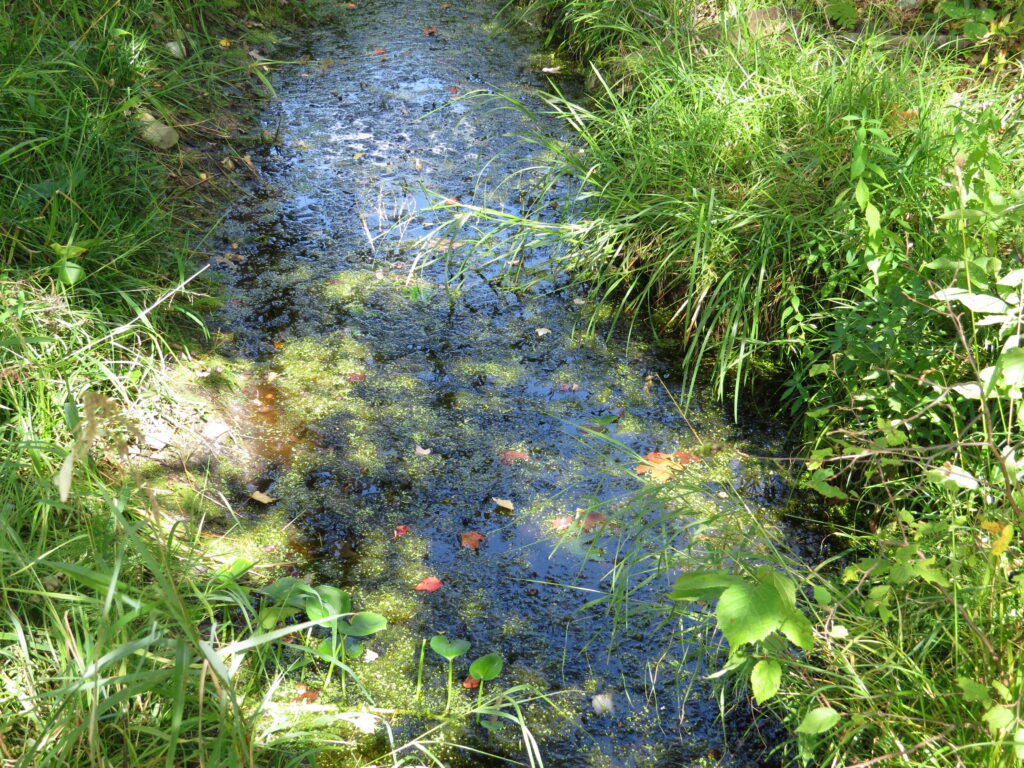
I didn’t take any pictures of the campsite, but I kind of want to go back and camp there sometime. It was an unexpected find with a special feel to it—that spirit of the wilderness that combines discovery, freedom, peace, and a satisfactory sense of being.

Tree roots made stair steps, ‘like a railroad track’ observed Chris—the ways we get where we’re going.
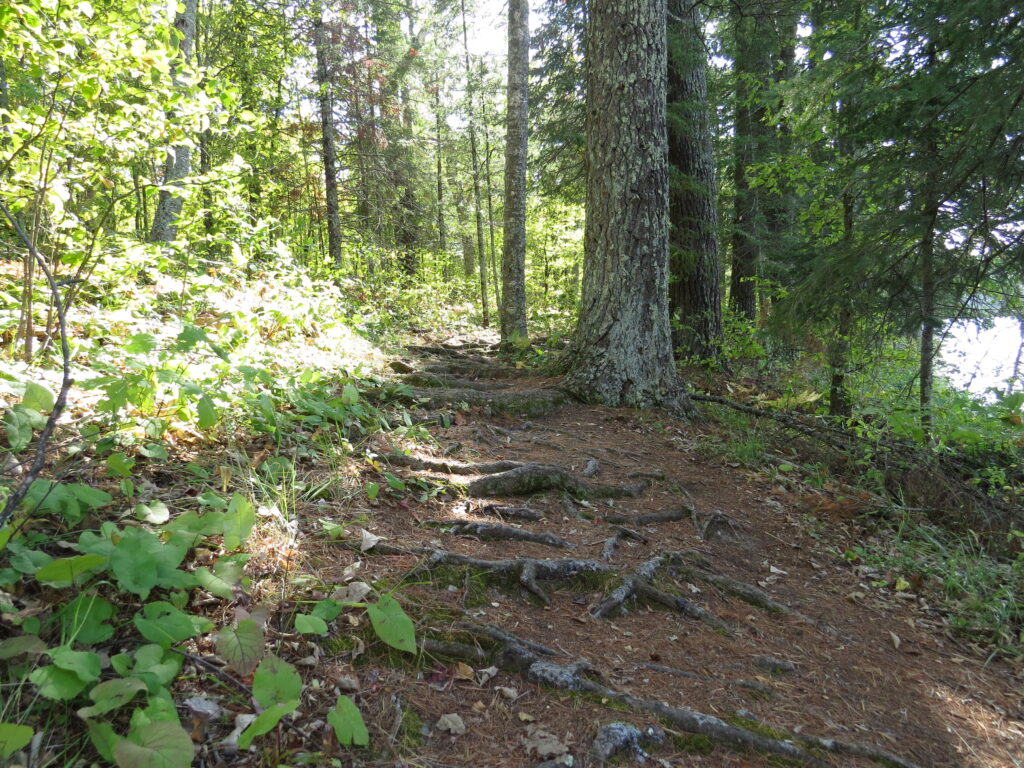
The bright berries of a Winterberry shrub that climbed close to an old Birch tree help us know that we can be fruitful during any season of life.
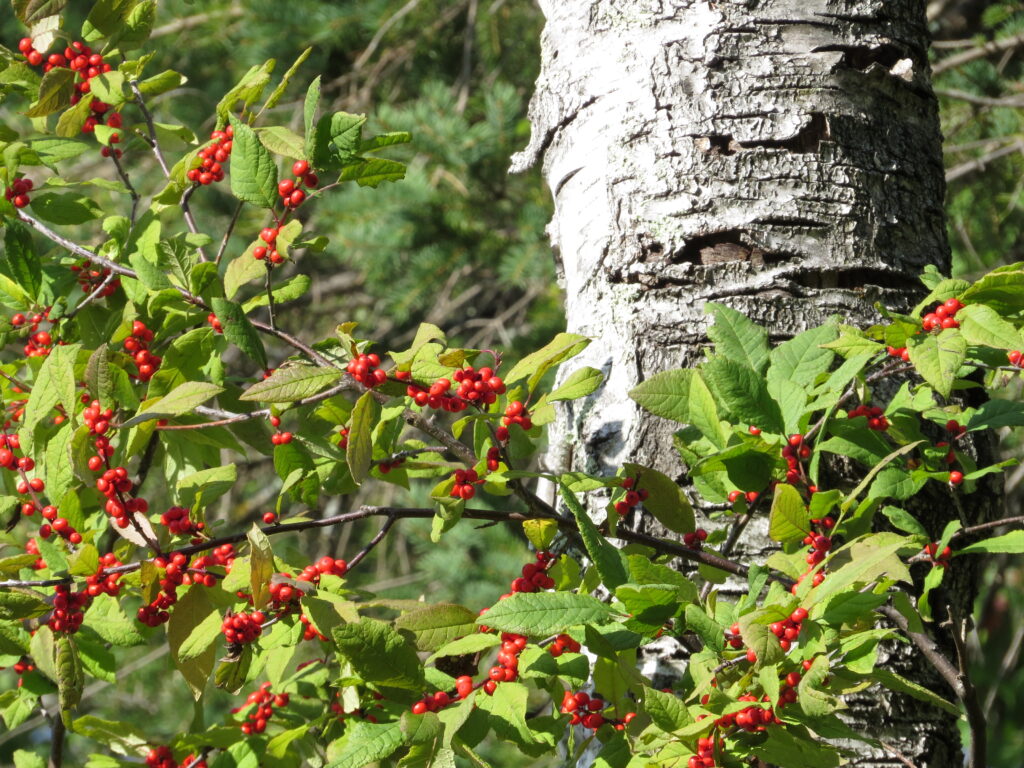
On the last part of the trail we passed another beaver lodge that was covered with Jewel Weeds, and beside the lodge was an old, fallen tree that seemed to be a practice log (or maybe a teeth-sharpening log)?
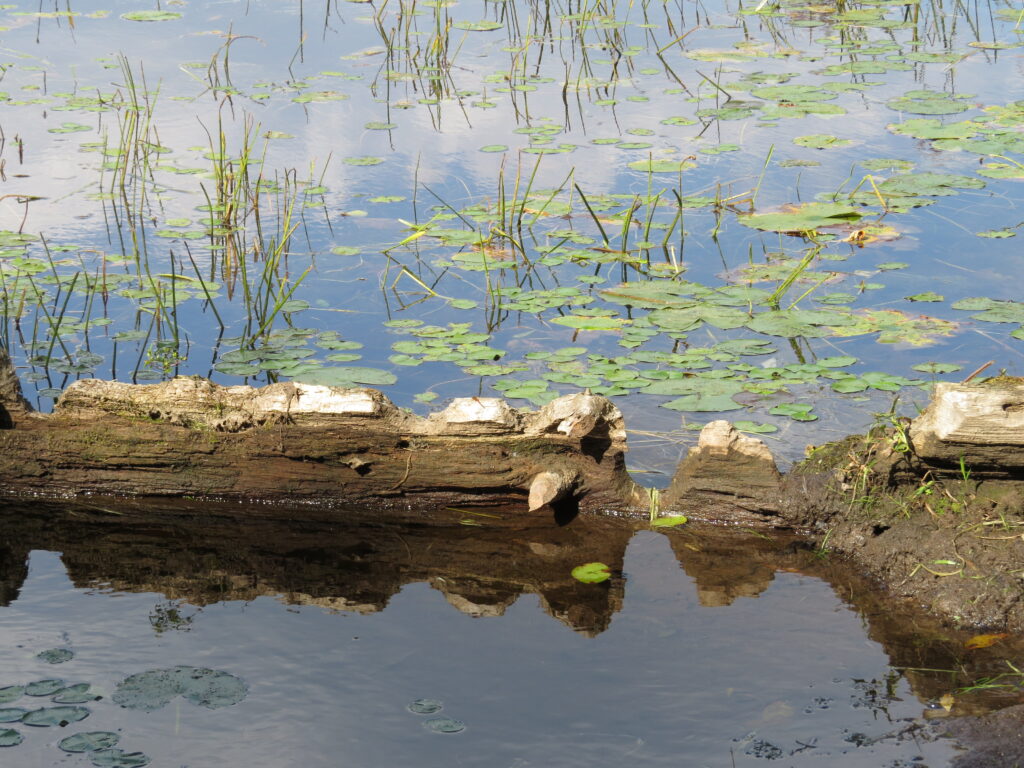
We also passed a random boulder that was at the edge of the Lake—out of place but purposeful, it seemed.
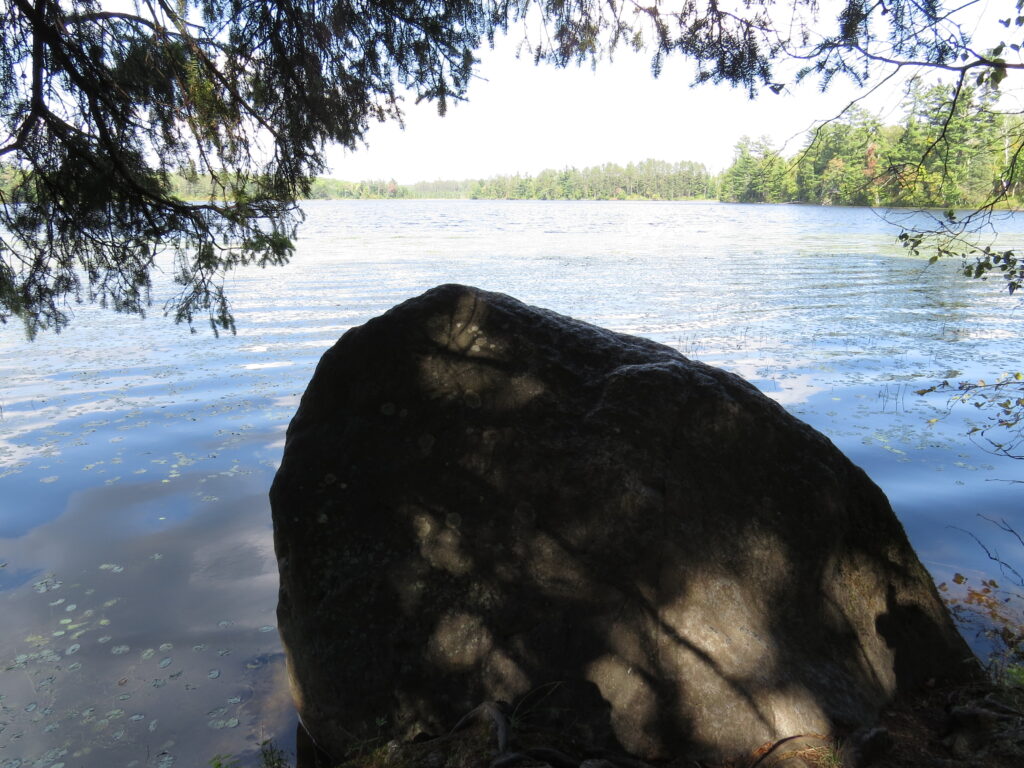
We finished our hike and found the campground had cleared out—it was only us and one other couple in this loop of the campground. Evening on Lake Shumway was peaceful and calm. We had circled the Lake—what more could we see and learn?
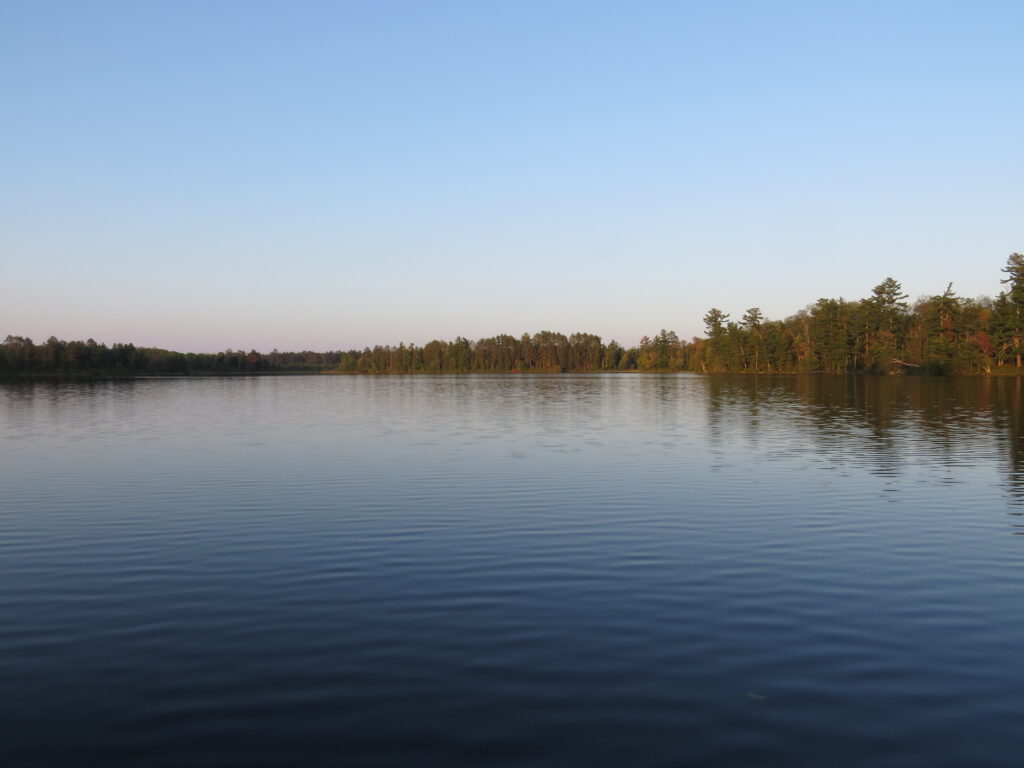
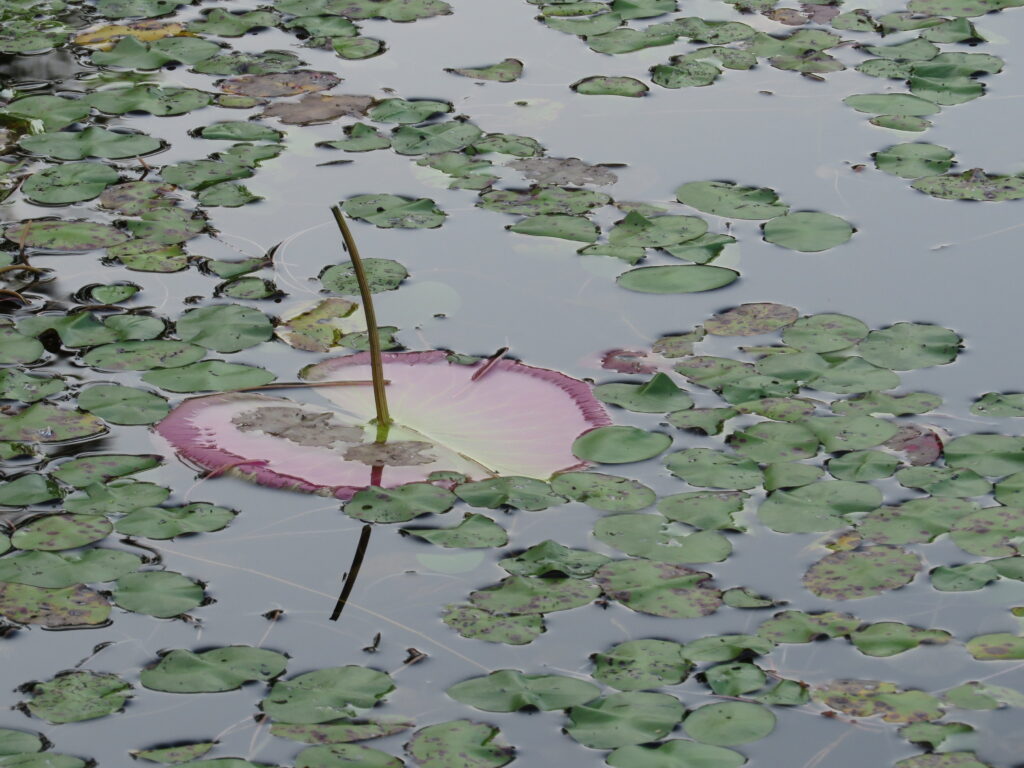
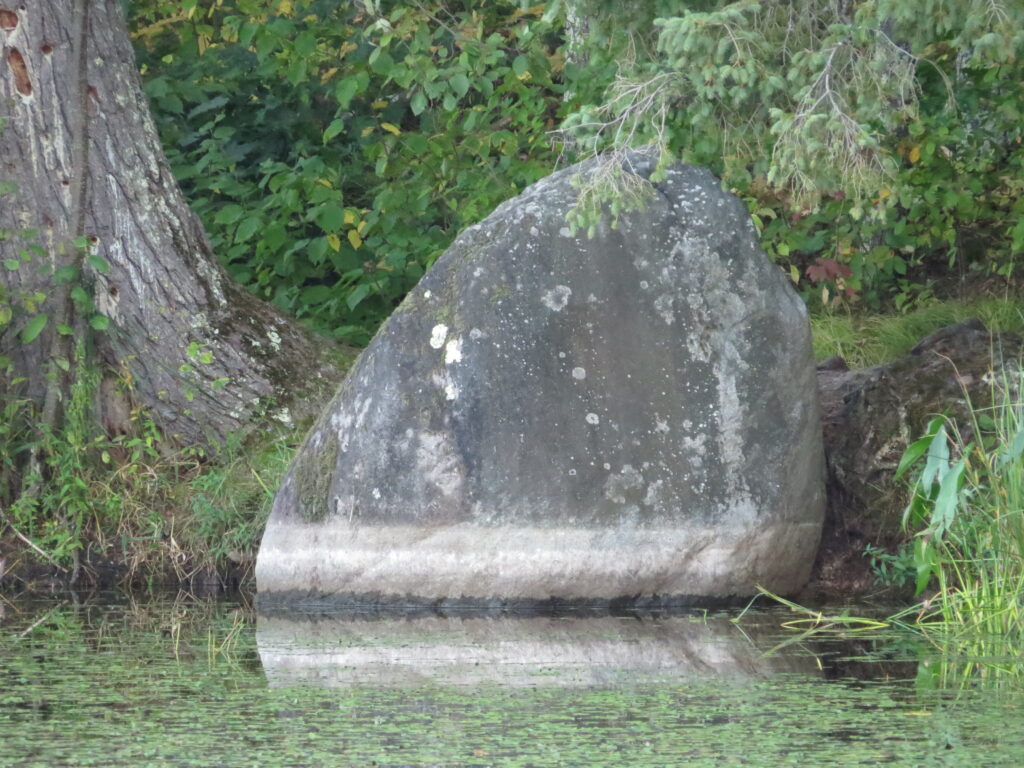
The next morning after some rain and before more rain, we paddled a canoe onto Lake Shumway. There’s more to a lake than a person can see from the shore, and there’s more to life than walking the trail over the years. Our interior life is a whole new adventure to explore, and in most cases, takes even more courage to navigate.
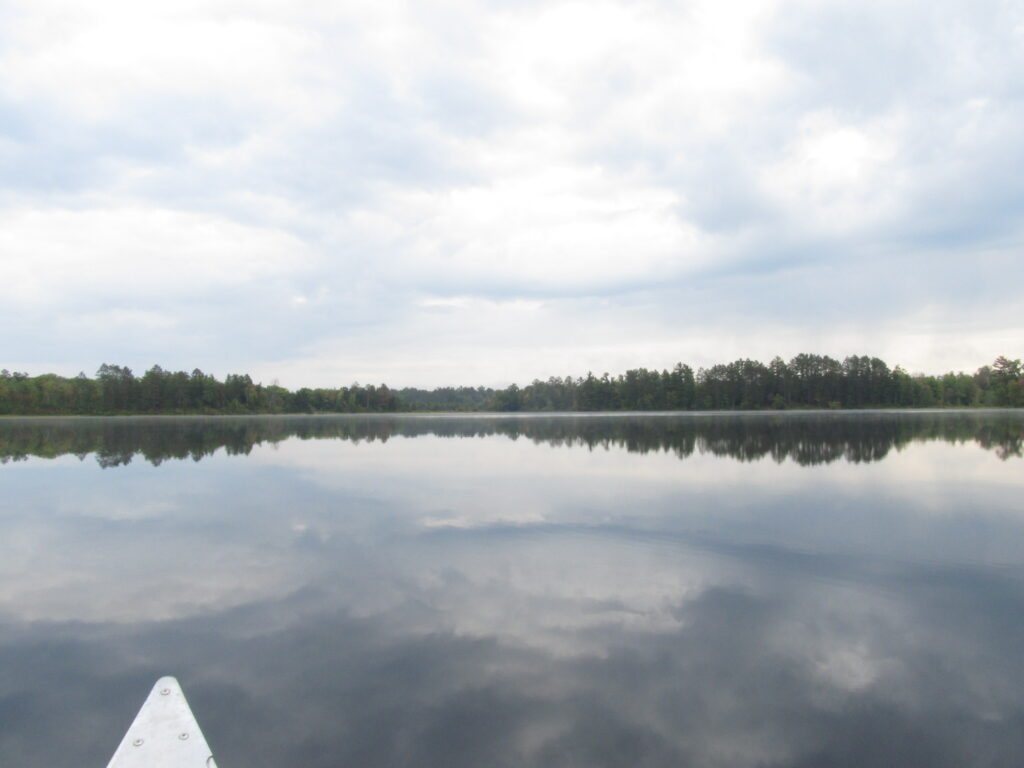
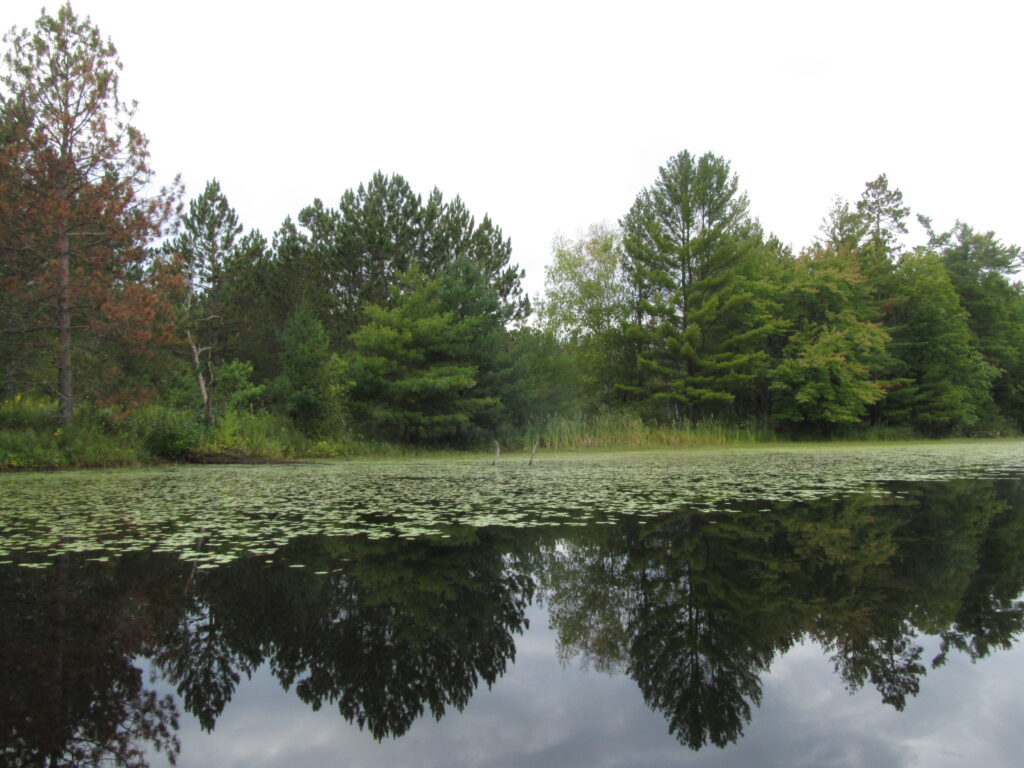
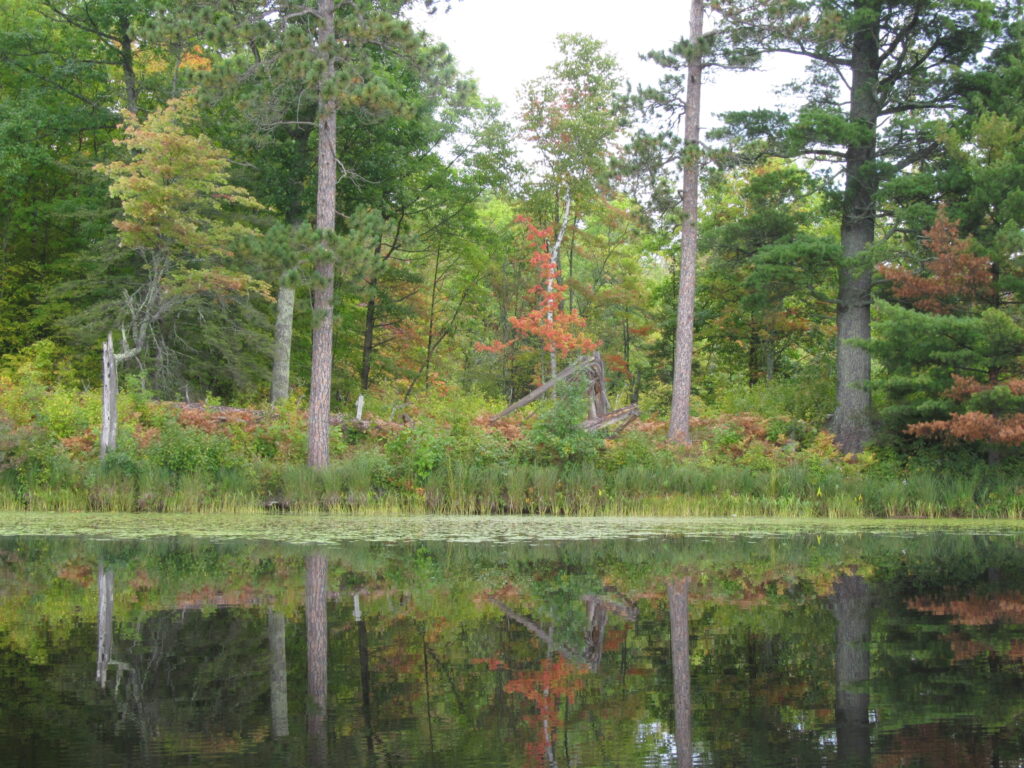
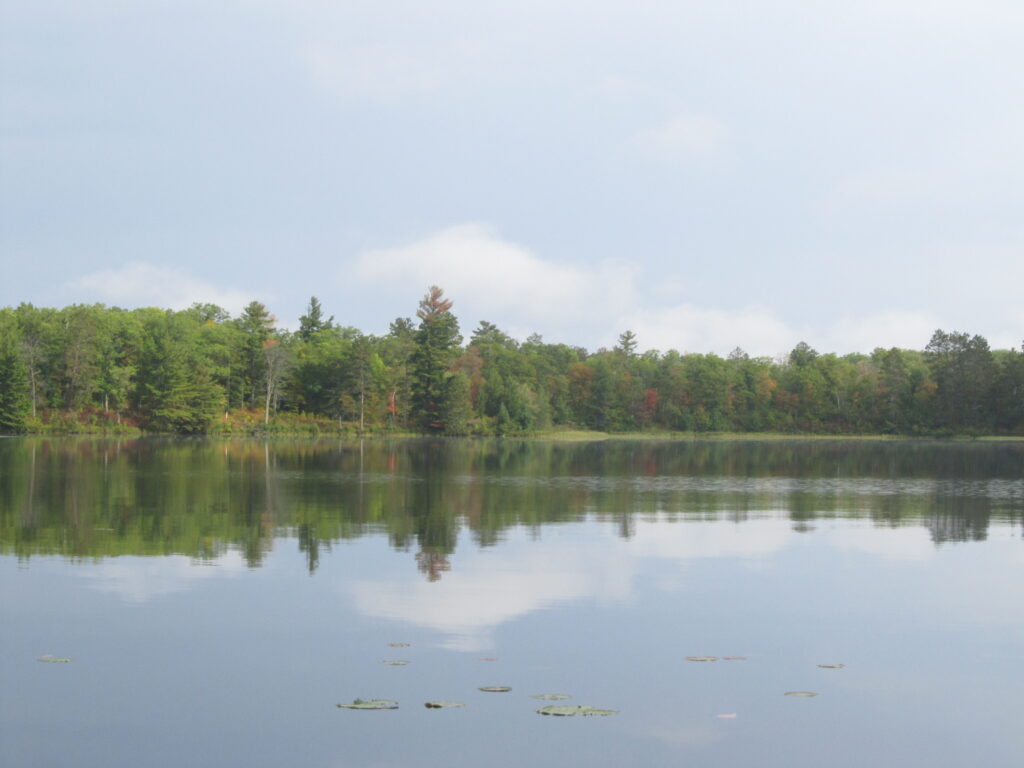
Reflecting on the paths we have taken, the work we have done, the bridges we may have burned, and the special or not-so-special people and places we have encountered is the soul work of our lives. Asking ourselves questions and waiting patiently for the absolute truth of the answer—the answer that wells up tears in our eyes and resonates deep in our hearts and bodies. It takes so much courage to go there, to explore there, to be present there. But therein also lies the trail to freedom, peace, and satisfaction. We may have felt out of place in the world, but after exploring our interior life, we can be like the lake-side boulder and stand in our purpose and dignity. Our soul work is ongoing.

